|
Investors Stake Their Claim in DEI |
By Cathy Becker, Responsible Finance Campaign Director
Last June, Tractor Supply made headlines when it announced it would eliminate jobs and goals focused on diversity, equity, and inclusion (DEI), as well as stop sponsoring Pride festivals and submitting data to the LGBTQ advocacy group Human Rights Campaign.
Soon following were similar announcements from John Deere, Harley-Davidson, Brown-Forman (maker of Jack Daniel’s), Lowe’s, Ford, and Molson-Coors.
Many of these companies had started or increased DEI programs and goals following the murder of George Floyd and Black Lives Matter protests in 2020. But in the wake of the Supreme Court decision to overturn affirmative action in college admissions – as well as pressure from conservative crusaders like Robby Starbuck and the climate-change denying National Center for Public Policy Research – they began to backtrack in 2024.
Starbuck began by targeting companies that rely on rural or conservative customers, but recently expanded to mainstream companies like Meta, McDonald’s, and Target.
Among those companies was Walmart, which in November announced it would end racial equity training, phase out supplier diversity programs, review funding of Pride events, stop participating in the Human Rights Campaign survey, and close its Center for Racial Equity, a $100 million philanthropic initiative to address gaps in outcomes for African Americans in education, health, criminal justice, and other areas.
Investors push back
All these shifts in company diversity, equity, and inclusion programs have not gone unnoticed by investors – some of whom have started to push back.
As the season for corporate annual general meetings heats up, several investor groups have submitted shareholder resolutions related to DEI changes:
- As You Sow is asking Tractor Supply to issue a report describing the research and analysis it did before making changes to its DEI policies and practices.
- Amalgamated Bank and As You Sow are asking John Deere to issue a report on the effectiveness of its efforts to create a meritocratic workplace.
- As You Sow is asking Harley-Davidson to issue a report describing the research and analysis it did before making changes to its DEI policies and practices.
- Mercy Investments and As You Sow are asking Ford Motor Co. to issue a report describing the research and analysis it did before making changes to its DEI policies and practices.
Shareholders are also issuing letters and statements. This year Whistle Stop Capital organized its third Investor Statement Reaffirming the Need for Companies to Ensure Meritocratic Workplaces asking companies to:
- Make clear their ongoing commitment to ensuring diverse, equitable, and inclusive workplaces.
- Have clear executive management and board level oversight of workplace culture.
- Publish quantitative data showing the diversity of their workforce alongside their hiring, promotion, and retention rates of employees by diversity characteristics.
The statement is “a show of support from investors who are paying diligent attention to these issues,” said Jaylen Spann, senior associate at Whistle Stop Capital. “We have the intention of sharing this with companies so they can hear from shareholders just how much of a focus there is on these issues outside of what’s happening in politics.”
Similarly, Mercy Investments and the Interfaith Center on Corporate Responsibility also organized a joint investor letter to Walmart, signed by 31 organizations managing $266 billion in assets, including Green America, Natural Investments, and Oxfam America.
“There’s a coalition of faith and values investors that have been engaging Walmart for decades on equity issues, diversity, and things that fall in the larger bucket of DEI,” said Caroline Boden, director of shareholder advocacy at Mercy Investments. “When we saw the announcement that they were rolling back many of their commitments and programs, we collectively felt this immense sense of disappointment.”
Additionally, as the largest private employer in the United States, Walmart’s decision to bow to anti-DEI campaigns has a far-reaching impact on the corporate landscape beyond their own day-to-day operations.
“They have an outsized impact whether they want to acknowledge that or not. The decisions they make, including on these issues, have a ripple effect in the market,” Boden said.
The investor letter to Walmart got results when company executives agreed to meet with representatives of the investor groups. Investors brought several questions to that meeting such as: What was the business case for rolling back DEI commitments? What conversations did Walmart have with anti-DEI activists? Did they talk with any other stakeholders? What role did the board play?
Making the Business Case
Investors’ support of DEI programs isn’t just a moral stance; it’s also based on years of studies pointing to how DEI is good for business. The fourth edition of McKinsey’s long-running diversity report finds that companies whose executive teams have the highest representation of women and most ethnic diversity are 39% more likely to outperform financially than companies whose executive teams have the lowest representation of women and least ethnic diversity.
JUST Capital’s 2024 Index Concepts finds that Russell 1000 companies ranking in the top fifth for worker issues, workforce advancement, and a living wage enjoy cumulative returns of 24.57%, 25.35%, and 24.31% respectively, compared to an average index return of 8.31%. These companies are significantly more likely to disclose pay gaps, tie ESG performance to executive compensation, and have a human rights policy.
Another report, Capturing the Diversity Benefit by As You Sow and Whistle Stop Capital, uses the EEO-1 forms, or reports that companies with 100 employees or more are required to file with the Equal Employment Opportunity Commission and Department of Labor each year, of 1,641 companies in 11 sectors to analyze the relationship between workforce diversity and financial performance from 2016 through 2022.
The report finds higher percentages of BIPOC management are positively correlated with a series of financial performance indicators such as enterprise value growth rate, income after tax, and return on equity. The relationship was strongest in the Communications Services, Consumer Discretionary, Consumer Staples, Financials, Health Care, and Information Technology sectors, and weakest in Energy, Materials, and Real Estate. Large-cap companies had the clearest positive relationship with diverse management.
“Companies do have the opportunity to outperform financially when they have more diversity within their management and executive leadership teams,” Spann said. “This means they are paying greater attention to the talent they source, the talent they retain, and the people they are advancing in their organization.”
Standing Up for DEI
Not every company is retreating in the face of attacks on DEI programs. When the National Center for Public Policy Research put an anti-DEI resolution on its proxy ballot, Costco pointedly advised shareholders to vote against it.
“Our Board has considered this proposal and believes that our commitment to an enterprise rooted in respect and inclusion is appropriate and necessary,” Costco wrote. “The report requested by this proposal would not provide meaningful additional information to our shareholders.”
Costco shareholders voted down the resolution by over 98% at its annual meeting on January 23. Apple shareholders also rejected an anti-DEI resolution by 97.3% on February 25.
Cosmetics producer e.l.f. Beauty, is also standing by its diversity programs, which CEO Tarang Amin credits for its success. The company has a young diverse following, with a workforce that is 75% women and 40% people of color. Sales have increased 75% in the past five years.
Even if other companies are not openly stating support for DEI, they are also not abandoning it. A 2024 report by Paradigm found that although companies were distancing themselves from terms like DEI, they are still doing the work: 60% of companies have a DEI strategy, 66% have a DEI budget, and 73% have DEI commitments.
“For many investors who have been in ongoing engagements with publicly traded companies for years, what we are hearing is that the narrative might be shifting, but the work is staying the same,” said Anandi Somasundaram, program lead for Racial Justice Investing. “It might look like shying away from their DEI commitments ... but coalition participants are noticing that what’s actually changing in practice is close to nothing.”
Other experts point out the risks of rolling back DEI commitments. For example, the National Institute for Workers’ Rights finds that a retreat from diversity, equity, and inclusion programs could be used as evidence against companies in discrimination lawsuits over a hostile work environment and disparate treatment.
“They can’t get rid of the Civil Rights Act of 1964, which says companies can’t discriminate based on sex, race, national origin,” said Nadira Narine, senior program director at Interfaith Center on Corporate Responsibility. “So if companies give in to the right-wing agenda around DEI, what do they face on the other side? They face litigation, they face consumer backlash, they face workforce backlash. They really need to account for all the things that could come at them if they don’t abide by basic civil rights law.”
What can you do?
While investors can push back on DEI roll backs through shareholder resolutions and letters to management, consumers can also take action:
- Use your dollars to support companies that support you. You can search for diversely owned sustainable businesses in our Green Business Network.
- Examine your own portfolio, including retirement and college funds, and reach out to companies that are either rolling back or sticking up for DEI programs.
- Push any institutions you are part of that have investments to vote on shareholder resolutions and contact companies to make their views known.
Together we can show companies the value of DEI programs and the risks of rolling them back.
|
|
BlueSky Logo |
|
|
10 Reasons Not to Shop Amazon |
Amazon is full of deals, but those deals come at a big cost to people and the planet. So, before you click on that item that sounds like a steal, check out Green America's 10 reasons to not shop Amazon.
Don’t shop Amazon because it...
- Exploits workers and fights unions. Amazon has a long history of opposing unionization. The National Labor Relations Board is investigating 343 charges related to anti-union activities by Amazon, its subsidiaries and direct contractors. During the unionization drive at a warehouse in Bessemer, Alabama, NBC News reports: “Amazon illegally arranged for a U.S. Postal Service mailbox to be installed in the fulfillment center parking lot during the election. The union alleged that it gave the impression that Amazon might have had access to the secret ballots cast by workers.” The company also recently rolled back its DEI initiatives. Amazon had set a goal in 2020 of doubling the number of Black vice presidents and directors.
- Has more than double the injury rates of industry average. Recent research by the Strategic Organizing Center found that injury rates at Amazon facilities are reportedly double that of the industry average. In 2022, Amazon reported 39,000 injuries at warehouses, an increase of nearly 1,000 injuries from 2021.
- Creates dangerous working conditions for delivery workers. A May 2022 report from the Strategic Organizing Center found that nearly one in five workers experienced injuries, a 40 percent increase over the prior year.
- Facilitates anti-immigrant actions by the US Government. Starting in the first Trump Administration, the Guardian reported that Amazon Web Services (AWS) hosted the Department of Homeland Security's (DHS) databases which allows "the department and its agencies to track and apprehend immigrants." DHS’ databases, currently hosted on AWS servers, allow the department to “supercharge surveillance and deportation” according to immigrant advocates.
- Is a major climate emitter. Amazon’s climate emissions are similar to Denmark’s and its direct emissions grew seven percent between 2022 and 2023, in part due to increased emissions from delivery vehicles. Tech companies, including Amazon, are increasingly relying on fossil fuels and nuclear energy to power massive servers for AI technology, undermining their current climate and renewable energy commitments
- Creates excessive packaging waste. A report from Oceana found that in 2019, Amazon generated 465 million pounds of plastic waste. This is “enough to circle the earth over a hundred times in the form of air pillows.” In response to environmental organization campaigns, Amazon has since taken steps to reduce plastic packaging, but the company still sends out plastic mailers with chasing arrows symbols, making it appear that they are recyclable, when most municipalities can’t recycle them.
- Refuses to protect factory workers. In 2020, Amazon and adidas supplier Hulu Garment in Phnom Penh, Cambodia, suspended its entire workforce of 1,020 workers, leaving workers owed $1 million in pay. Labor justice organizations, including Green America, are urging Amazon to provide payments to the workers, which it so far has refused to do. And, while Amazon adopted policies to protect consumers from toxic chemicals in its clothing, it has yet to adopt policies protecting workers.
- Penalizes small businesses that use its platforms. The Sun magazine did a feature interview with author Stacy Mitchell on how Amazon undermines local economies and is bad for small businesses. The Wall Street Journal documented Amazon using data from 3rd party sellers to create its own products. In 2023, the US Federal Trade Commission, joined by 17 state Attorneys General, filed suit against Amazon for using its monopoly power to stamp out rivals.
- Is a tax dodger. In 2018, Amazon faced scrutiny when it paid zero dollars in federal income taxes on its $11 billion profits and even received $129 million in tax rebates. Three years later, the company was only paying a federal income-tax rate of 6%. Without tax breaks, the company would have paid an additional $5 billion in taxes that year. The Institute for Local Self Reliance has documented how Amazon’s tax dodging fueled its rise as a monopoly provider.
- Sells unsafe products. In July 2024, the US Consumer Product Safety Commission ordered Amazon to take action to stop selling unsafe products on its website to unsuspecting consumers. The Commission found that “400,000 products are subject to this order: specifically, faulty carbon monoxide (CO) detectors, hairdryers without electrocution protection, and children’s sleepwear that violated federal flammability standards.”
What You Can Do
- While Amazon makes it so easy to shop on its site, if you resist the urge to engage in one-click shopping and instead shop directly with a local green business, you’ll have the satisfaction of knowing you are supporting your local economy and get to meet business owners and employees who share your values.
- Take Action today to send a message to Amazon urging it to protect the rights of all workers.
You’ll wind up being more intentional about your spending, and more likely only purchase what you need, and you’ll be directly supporting the green economy.
|
|
Tannis Williamson |
|
|
Partner, Weaving Futures and Founder, Shareholder Democracy |
**********************************************************************************
Green America is an equal opportunity employer. All qualified applicants will receive consideration for employment without discrimination regarding: actual or perceived race, color, religion, national origin, sex (including pregnancy, childbirth, related medical conditions, breastfeeding, or reproductive health disorders), age (18 years of age or older), marital status (including domestic partnership and parenthood), personal appearance, sexual orientation, gender identity or expression, family responsibilities, genetic information, disability, matriculation, political affiliation, citizenship status, credit information or any other characteristic protected by federal, state or local laws. Harassment on the basis of a protected characteristic is included as a form of discrimination and is strictly prohibited.
|
|
Walmart and Target Walked Back Their Commitment to DEI. What Can We Do in Response? |
At the 2025 Grammys, Global Impact Award winner Alicia Keys used her time at the mic to state, “DEI is not a threat, it’s a gift.” With Diversity, Equity, and Inclusion (DEI) under attack from the Trump Administration, making the case for DEI to millions of people was inspiring.
And it’s not just major stars stating the case for DEI. Big box retailer Costco made a strong argument for DEI in response to a shareholder resolution asking the company for a report on the risks of DEI. The Costco Board’s statement in response is worth quoting at length:
Our success at Costco Wholesale has been built on service to our critical stakeholders: employees, members, and suppliers. Our efforts around diversity, equity and inclusion follow our code of ethics … and reinforce with everyone at our Company the importance of creating opportunities for all. We believe that these efforts enhance our capacity to attract and retain employees who will help our business succeed … As our membership diversifies, we believe that serving it with a diverse group of employees enhances satisfaction … And we believe (and member feedback shows) that many of our members like to see themselves reflected in the people in our warehouses with whom they interact.
Having diversity in our supplier base, including appropriate attention to small businesses, is beneficial for many of the same reasons diversity benefits our Company. We believe that it fosters creativity and innovation in the merchandise and services that we offer our members.
Costco’s shareholders agreed with the Board with 98 percent voting against the resolution. Shareholders were likely unpersuaded by the proponents’ over-the-top characterization of DEI: "Diversity, equity and inclusion ….is weaponized language concealing a radical Marxist agenda." That’s because shareholders realize the obvious: DEI is good for creating a welcoming and innovative space that benefits employees, customers, and suppliers – it’s good for morale and for business.
And Costco is not alone. A recent survey of 1,000 companies found that only five percent were cutting back on DEI while 22 percent are increasing their DEI budgets. Apple, JP Morgan Chase, Microsoft, and several other Fortune 500 companies recently reiterated their support for DEI. And multiple research studies document the benefits of DEI to corporate culture and performance.
So, What’s Up with Walmart and Target?
But some companies are walking back their commitments to DEI. Two notable recent companies in retreat are mega-retailers Walmart and Target.
Walmart made DEI commitments in 2020 following the murder of George Floyd and the resulting protests. But in November 2024, the company announced it was “ending racial equity training programs for staff and evaluating programs designed to increase supplier diversity.” And Walmart announced it was ending its five-year, $100 million commitment to the Center for Racial Equity, as well as its support for Pride celebrations and participation in the Human Rights Campaign’s Corporate Equality Index.
Target similarly rolled back its DEI programs and support for Pride. The company says it concluded its three-year DEI goals as planned, is rebranding its supplier diversity team to “supplier engagement,” and is ending its participation in the Human Rights Campaign’s Corporate Equality Index. Tellingly, its chief community impact and equity officer stated, “as a retailer that serves millions of consumers every day, we understand the importance of staying in step with the evolving external landscape, now and in the future.”
This mention of “the evolving external landscape” is likely referencing Donald Trump’s return to the White House and his administration’s hostility to DEI. Administration attacks on DEI, starting with the federal government agencies, are causing concerns for any private entity that supports DEI.
Trump’s attorney general, Pam Bondi, issued a memo on Day 1 telling Department of Justice staff to “investigate, eliminate, and penalize” private sector companies and universities for “illegal” DEI practices. Left unclear is how corporate DEI practices are illegal; in fact, corporate training on preventing harassment and discrimination (often part of DEI) can actually protect companies from discrimination lawsuits.
The “evolving external landscape” changing is also likely a nod to the targeting of companies by right-wing activists, including Robby Starbuck, the former music video producer turned opponent of DEI. But by rolling back commitments to Black, Brown, and LGBTQ+ employees, suppliers, and customers risks creating backlash from millions of customers, as well as demoralizing employees and ultimately reducing profits.
Time to Act
That backlash from customers is already here. Soon after Target’s announcement, activists protested outside the company’s headquarters and called for a boycott of the company. At the protest, civil rights attorney Nekima Levy Armstrong told MPR news that she attributes Target’s walking back of DEI to Trump’s threats, but goes on to say, “They (Target) acted cowardly, and they made the decision to bow down to the Trump administration, when we are here today, saying we will not bow down.”
But, some of the Black-owned businesses that sell at Target have asked customers not to boycott their products at the retailers, since so much of their revenue comes from sales on the company’s shelves.
So, what can you do as a consumer?
- Support Black-owned and other diversely owned businesses at Target. For example, you can go to Target and purchase only those products from Black and diversely owned businesses such as Black Girl Sunscreen and Black & Bold coffee. Buy only products from diversely owned companies, and nothing else. While you are there, let the store manager know what you purchased and why, and that you won't be purchasing anything else.
- Then send the same message out on your social media and call the company's 800 line (see below).
- Purchase directly from Black-owned businesses. If you no longer want to step foot in Target or Walmart, you can support Black-owned businesses directly through their websites.
- Take part in the February 28, 2025 blackout by not purchasing from any major retailers for one day. Organizers are asking people to purchase from a local or small business instead if they need to make a purchase.
- Check out the NAACP’s The Black Consumer Advisory for strategies to support Black-owned businesses and companies that support DEI.
- Shop from Green America’s Green Business Network, with hundreds of small green businesses offering thousands of products. Use the “Search by Ownership” filter to find diversely owned businesses, including Black-, women-, LGBTQ-, LatinX-, Asian American-, Indigenous-, and disability-owned companies.
Take Further Action
Upset with Target’s, Walmart’s, and other companies’ walking back of DEI? Let them know you prefer to shop at stores that value diversity in their workforce, suppliers, and customers. A simple message expressing your disappointment and asking the companies to reconsider their stance on the companies’ social media page can go a long way.
- You can comment on Walmart’s Facebook or Instagram.
- You can comment on Target’s Facebook or Instagram.
- You can call Walmart at 800-925-6278.
- You can call Target at 800-440-0680.
You can also reach out to the companies through chats and forms on their website.
Similarly, letting companies like Costco know that you applaud their continued support for DEI can help these companies stand strong.
And join Green America today – members will receive our next Green American Magazine, which dives into the value of DEI in companies small and large.
|
|
Ask a Green Expert |
Green America harnesses economic power — the strength of consumers, investors, businesses, and the marketplace — to create a socially just and environmentally sustainable society. Together, we can protect our beautiful planet and all its people!
|
|
Check Your Inbox! |
Thank you for signing up to receive resources on Climate Victory Gardens! We just sent you an email, so please check your inbox.
Green America harnesses economic power — the strength of consumers, investors, businesses, and the marketplace — to create a socially just and environmentally sustainable society. Together, we can protect our beautiful planet and all its people!
|
|
Climate Victory Gardens 101 |
|
|
Safer Electronics Supply Chains: How Industry Leaders Are Eliminating Hazardous Chemicals |
Our Clean Electronics Production Network - which aims to remove hazardous chemicals from production of mobile phones, computers, etc. - has published the 3rd Annual Report of their Toward Zero Exposure program!
The program has now completed three full years, and in that time, Founding TZE Signatories - Apple, Dell, HP and Fairphone - have positively impacted thousands of workers as they have worked to meet TZE program commitments to reduce or eliminate worker exposure to hazardous chemicals.
Fairphone completed year 2 of their program and has already turned their focus towards CEPN's 2nd Round of Priority Chemicals, earning the designation of 2nd Round Signatory.
Collectively, our Signatory and program influence continues to grow:
- Signatories included nearly 1 million workers in employee engagement & participation initiatives such as Joint Chemical Safety Committees or grievance hotline awareness, a significant increase over last year.
- Over 1,000 facilities in the Signatories’ manufacturing supply chains have collected data on process chemical use with the Process Chemical Data Collection Tool (or equivalent), remaining consistent with last year’s impact.
- Over 800 facilities in the Signatories’ manufacturing supply chains are estimated to have already substituted the 1st Round of Priority Chemicals. Well over 100,000 employees work in production in those facilities.
- The number of distinct supplier companies that have been influenced to improve worker chemical safety by TZE Signatories also continues to exceed 200 companies.
- Signatory and program influence extends to facilities in at least 30 countries.
The 3rd Annual TZE Report also details the program's growth through new tools and resources and growing recognition among partners, peers, and industry leaders.
We invite you to join us in celebrating the success of the TZE program thus far and we look forward to continued growth in 2025 and beyond. We welcome companies that share the values of our Founding Signatories to join us in the effort to protect workers from exposure to hazardous process chemicals in the electronics supply chain.
|
|
Climate Smart Insurance Directory |
|
|
GSNR Letter |
|
|
Over 150 Community, Business, and Environmental Organizations Oppose Proposed Wood Pellet Projects in California |
Over 150 Community, Business, and Environmental Organizations Oppose Proposed Wood Pellet Projects in California
Draft environmental impact report on two Drax proposed plants that would produce more than one million metric tons of wood pellets per year draw comments from over 45,000 individuals
Coalition calls report insufficient in protecting local environment and communities and call for its rejection
SACRAMENTO, CA (January 21, 2025) – As Golden State Natural Resources’ (GSNR) Draft Environmental Impact Report (DEIR) public review period on its industrial-scale wood pellet project proposal comes to a close, civil society is raising their opposition.
The project would include two industrial-scale wood pellet plants, one in the central Sierras and another in Northern California, as well as a storage and export terminal in Stockton, CA. The wood pellets will ultimately be burned in overseas power plants. While the project rests on wildfire mitigation and forest resiliency, the DEIR fails to adequately explain how GSNR would achieve that goal, fails to evaluate alternatives that would actually reduce wildfire risk, and admits it will cause significant air pollution impacts to communities and worsen the biodiversity and climate crises.
Opponents say the analysis included within the DEIR is woefully insufficient, lacking critical details, and riddled with inaccuracies. Even based on their own analysis, this project is rife with “significant” adverse community, climate, and ecological impacts.
See below these key impacts and what advocates are saying,
Details on key DEIR findings:
- Pellet plants in Tuolumne and Lassen Counties will conflict with the county’s air quality plans. The Lassen facility will exceed air pollution control district limits for dangerous air pollutants like particulate matter, nitrogen oxide, and carbon monoxide. The Tuolumne County facility will exceed the annual threshold for CO. These impacts come with health risks: GSNR facility-induced individual cancer risk in Lassen is more than double CEQA’s threshold of significance and in Tuolumne County is more than four times than CEQA’s threshold of significance
- The wood pellet storage and export terminal will create significant NOx impacts as well as cumulatively significant PM 2.5 impacts in an area already failing national standards for PM 2.5
- The DEIR proves that GSNR’s project is inadequate and counterproductive for the goal of wildfire mitigation. The DEIR fails to demonstrate that the project would mitigate wildfire risk and improve forest resiliency. The proposed logging activity will occur largely in remote areas far from communities. Furthermore, while the DEIR claims the project would result in increased management of dense forests to address wildfire risk, it categorized only 27% of the project area’s forests as “overcrowded” and an even smaller amount—15.5%—of the project area consists of high-density stands. Even more tellingly, ~90% of forests that would be “thinned” as part of the project are outside of high density areas, where the DEIR states that treatment effects would be diminished.
- The entity carrying out this Project, Golden State Natural Resources (GNSR), plans to partner with Drax, a United Kingdom-based company that has a long track record of devastating forest ecosystems throughout North America.
- This project makes no sense as “climate mitigation” because it will release substantial climate heating greenhouse gas emissions at every stage, worsening the climate crisis. The project would significantly increase logging of California’s forests, releasing their stored carbon at a time when we must increase forest protection and carbon storage. As admitted by the DEIR, the carbon emissions from this project would be significant and conflict with meeting California’s climate goals.
Here is what Advocates are saying:
Gloria Alonso Cruz, environmental justice advocacy coordinator with Little Manila Rising in Stockton: “It is frustrating to see greenwashed projects like GSNR’s Wood Pellet continue to list the community of Stockton as the only option to materialize false climate solutions and continue business as usual in a state designated Disadvantaged Community (DAC) that is already overburdened by air pollution and facing decades of unmet National Air Quality Standards. I fear that Stockton and the communities impacted by the project will see the same treatment that other places across the U.S. have received from the wood pellet industry.”
Matt Holmes, project director for Valley Improvement Projects: “Cashing in on California forests GSNR's filthy trucks, trains and ocean going vessels will poison the unlucky overburdened communities that happen to lie between their pellet mills and the Port of Stockton all in the name of science free forest resilience. “
Rita Vaughan Frost, Forest Advocate at NRDC (Natural Resources Defense Council): "As if the biomass industry’s sordid environmental history isn't alarming enough, the impact report that GSNR released speaks for itself: this project is an ineffective attempt at wildfire prevention and a health hazard to communities across Northern California. It's time to reject this project, protect California's forests from industrial-scale extraction, and dedicate our time and resources to real solutions that will safeguard communities from wildfires."
Gary Hughes, Biofuelwatch, Americas Program Coordinator: "As the deadline for written public comment passes we are reminded that public agencies like the California Air Resources Board explicitly requested that GSNR schedule adequate public meetings on the draft environmental documentation -- a course of action that GSNR refused to take. Despite the effort of GSNR to avoid public scrutiny, dozens of local, regional, statewide, national and international environmental and human rights stakeholders have made it clear that this wood pellet export scheme is a climate dead end."
Mary Elizabeth, M.S., R.E.H.S., Delta-Sierra Group Conservation Chair, Sierra Club: The Golden State Natural Resources's wood pellet export project undermines California’s climate and 30x30 goals. This wood export project will significantly harm local communities and forests, while moving us further away from environmental infrastructure that promotes equity and climate resilience. The DEIR failed to account for fire risks at the Port of Stockton, identifying utilities and regulatory agencies. The DEIR is another example of how Stocktonians are left to suffer from increased pollutant exposures that are "significant and unavoidable", as well as the other communities in Lassen and Tuolumne Counties.
Dan Howells, Climate Campaigns Director at Green America: “GSNR’s environmental assessment shows much of what we already knew. Drax’s industrial scale projects will hurt communities, destroy forests, and make climate change worse. And the overwhelming outcry from organizations and individuals shows that the public is seeing through the sales pitch from Drax and is telling California policy makers these projects must be rejected.”
Shaye Wolf, Ph.D., climate science director at the Center for Biological Diversity: “The devasting L.A. fires show it’s vital that we invest in the wildfire safety solutions that work, and this project takes us in the wrong direction,” said Shaye Wolf, Ph.D., climate science director at the Center for Biological Diversity. “This dirty wood pellet project would take away critical resources from home hardening and defensible space work, the solutions that best protect communities during wildfire. An extremely polluting industry that harms forests, communities and the climate can’t be allowed to get a foothold in our state.”
Dr. Mary Booth, Director, Partnership for Policy Integrity for the Partnership for Policy Integrity: “The Golden State project is underpinned by the usual assortment of half-baked claims that logging wilderness areas is going to help the climate and reduce the threat of fire. Given the emergency California is facing, it’s urgent to focus on measures that will actually protect communities.”
Maya Khosla, Sonoma County Climate Activist Network (SOCOCAN!): “California should be a leader in the race to replace fossil fuels, to address the climate crisis. Instead, the plan for GSNR facilities to produce about one million tons of pellets every year is ignoring the carbon emissions arising from logging, putting communities at risk everywhere along its destructive path, and doing nothing good for the climate. The false notion of carbon neutrality achieved by treating trees and other natural forest wood as “forest waste” is a loophole that benefits logging and polluting industries.”
###

Little Manila Rising (LMR) serves the South Stockton community, developing equitable solutions to the effects of historical marginalization, institutionalized racism, and harmful public policy. LMR offers a wide spectrum of programs that address education, environment, redevelopment, and public health. LMR values all people’s unique and diverse experiences and wishes to see the residents of South Stockton enjoy healthy, prosperous lives.
Valley Improvement Projects (VIP) strives to reach-out to low-income and working class communities, communities of color, immigrants, Spanish-speakers, LGBTQ community, religious minorities, indigenous communities, youth, elders, people with disabilities, houseless community, and many others who carry the extra burdens of our society.
NRDC (Natural Resources Defense Council) is an international nonprofit environmental organization with more than 3 million members and online activists. Established in 1970, NRDC uses science, policy, law and people power to confront the climate crisis, protect public health and safeguard nature. NRDC has offices in New York City, Washington, D.C., Los Angeles, San Francisco, Chicago, Beijing and Delhi (an office of NRDC India Pvt. Ltd).
Biofuelwatch provides information and undertakes advocacy and campaigning in relation to the climate, biodiversity, land and human rights and public health impacts of large-scale industrial bioenergy. We are a small team of staff and volunteers based in Europe and the USA.
The Delta-Sierra Group of the Mother Lode Chapter is a regional unit of the Sierra Club that organizes outdoor activities and focuses attention on environmental issues. We all agree to practice the Sierra Club motto that you should "Explore, Enjoy and Protect the Planet."
Green America is the nation’s leading green economy organization. Founded in 1982, Green America provides the economic strategies, organizing power and practical tools for businesses and individuals to solve today’s social and environmental problems.
The Center for Biological Diversity is a national, nonprofit conservation organization with more than 1.7 million members and online activists dedicated to the protection of endangered species and wild places.
Partnership for Policy Integrity (PFPI) uses science, litigation, policy analysis and strategic communications to promote policies that protect climate, ecosystems, and people.
SOCOCAN (www.SonomaCountyCan.ORG), is an umbrella for 50 organizations and 300 individuals.
|
|
Federal Insurance Office releases data on climate risk to home insurance |
In 2024, the Federal Insurance Office, an agency within the U.S. Department of the Treasury, worked with state insurance commissioners on a “data call.” The initiative gathered zip code level data from across the country on how climate change is affecting property insurance, covering claim frequency, claim severity, loss ratio, premium costs, nonrenewal rates, and cancellation rates from 2018 through 2022.
This is important because most major insurance companies are insuring fossil fuel projects and investing in fossil fuel companies -- even as they stop insuring customers in climate-vulnerable states and raise rates on everyone else because of the climate crisis caused by fossil fuels.
The data collection was not without controversy: At least seven states -- Florida, Alabama, Louisiana, Georgia, Indiana, Montana and North Dakota -- refused to participate, meaning insurance companies headquartered in those states did not report. However, national insurers and insurers in other states did report, for a total of 246 million policies or 80% of homeowners policies written during the study period.
But there was one problem: Neither the Federal Insurance Office nor the National Association of Insurance Commissioners would make the data public.
Pressuring the FIO
To address this, Green America partnered with Consumer Federation of America and 18 other groups on a letter urging the National Association of Insurance Commissioners to release the data. Another letter signed by 37 organizations urged the Federal Insurance Office to do the same.
When our letters did not produce results, advocacy groups launched a grassroots campaign seeking signatures on a petition asking the Federal Insurance Office to make the data it had gathered public. A total of 43,622 people signed the petition in a campaign organized by Consumer Reports, Americans for Financial Reform, Green America, and Public Citizen.
“Our members across the country are paying ever higher rates for property insurance — and that’s when they can even get insurance if they live in a climate-vulnerable area,” said Cathy Becker, responsible finance campaign director at Green America. “Yet instead of addressing the climate crisis behind these increased costs, big insurance companies are insuring and investing in its chief cause — the burning of fossil fuels. The least the Federal Insurance Office could do is release the data it has gathered about insurance company practices, so we can hold them accountable.”
On January 16, our actions produced results: The Federal Insurance Office finally released a report, "Analyses of U.S. Homeowners Insurance Markets, 2018-2022: Climate-Related Risks and Other Factors," along with a treasure trove of zip-code level raw data.
It was "the most comprehensive look yet at the effect of climate change on the American home insurance market," according to The New York Times.
This would not have happened without the quick action of almost 5,400 Green Americans, who had just one day after the holiday break to sign our petition. Thank you to each one of you who took action!
What’s in the report?
The Federal Insurance Office analyzed 246 million policies from 2018 through 2022 aggregated to the zip code level, or about 80% of homeowner policies. Key findings of the report include:
- U.S. homeowners faced increasing costs for insurance between 2018 and 2022. Nationally, the cost of homeowners insurance increased 8.7% faster than inflation, but customers in the most climate-stressed areas saw their premiums rise 14.7% faster than inflation.
- The cost of insurance was much greater in areas with higher expected losses to buildings than in areas with lower expected losses. Consumers in zip codes with the highest losses paid an average of $2,321 for homeowners insurance between 2018 and 2022 – 82% more than in zip codes with the lowest expected losses.
- Insurers’ costs also were higher in areas with the highest expected losses from climate-related perils. Claims averaged $24,000 in high-risk areas compared to $19,000 in low-risk areas. Insurers paid out more in claims than they took in premiums in high-risk areas, leading them to raise rates and not renew policies.
- Policy nonrenewal rates were higher in areas with the highest expected losses from climate-related perils. Nonrenewal rates were 80% higher for consumers in the highest-risk zip codes compared to the lowest risk.
- Different climate-related perils dominated different regions, resulting in diverse claims and loss patterns. Areas impacted by severe convective storms – thunderstorms, tornadoes, hailstorms – saw a higher number of claims, while regions impacted by wildfires saw higher dollar-value claims. Hurricanes accounted for more losses to buildings than other perils, resulting in the most expensive premiums and highest nonrenewal rates.
- The zip codes within each of the seven regions with the highest losses also had the highest cost of insurance for consumers, highest losses to insurers, and highest nonrenewal rates. The regions include Northeast, Southeast, Midwest, Northen Great Plains, Southern Great Plains, Northwest, and Southwest.
The report concluded by recommending the Federal Insurance Office and National Association of Insurance Commissioners collaborate on an annual data gathering and report, expand the data to include additional market segments such as multi-family residential housing, make the data available to policymakers and researchers, and use the data to improve public awareness of how climate risks affect insurance and the benefits of investing in property resilience.
What can you do?
The Federal Insurance Office did not gather any data on insurance company investments, nor did the report discuss how most major insurance companies insure fossil fuel projects and invest in fossil fuel companies. Please continue to follow Green America and allies such as Insure Our Future for information and actions you can take.
Meanwhile, if you are insured by one the large national insurance companies such as Liberty Mutual, State Farm, or GEICO that insures fossil fuel projects and invests in fossil fuel companies, you can use our Climate Smart Insurance Directory to find a local or regional insurance company in your state. We show you how to shop for insurance – some people who made the switch have saved hundreds of dollars!
|
|
Federal Insurance Office releases report on climate risks to home insurance |
In 2024, the Federal Insurance Office, an agency within the U.S. Department of the Treasury, worked with state insurance commissioners on what's known as a data call. The initiative gathered zip code level data from across the country on how climate change affected property insurance from 2018 through 2022.
This is important because most major insurance companies are insuring fossil fuel projects and investing in fossil fuel companies -- even as they stop insuring customers in climate-vulnerable states and raise rates on everyone else because of the climate crisis caused by fossil fuels.
Collecting insurance data is the first step to dealing with this issue, but there was one problem: Neither the Federal Insurance Office nor the National Association of Insurance Commissioners would release the data to the public.
To address this, Green America partnered with 19 other groups on a letter urging the National Association of Insurance Commissioners to release the data. A second letter signed by 37 organizations urged the Federal Insurance Office to do the same.
When our letters did not produce results, advocacy groups launched a grassroots campaign seeking signatures on a petition asking the Federal Insurance Office to make the data it had gathered public. A total of 43,622 people signed the petition in a campaign organized by Consumer Reports, Americans for Financial Reform, Green America, and Public Citizen.
“Our members across the country are paying ever higher rates for property insurance — and that’s when they can even get insurance if they live in a climate-vulnerable area,” said Cathy Becker, responsible finance campaign director at Green America. “Yet instead of addressing the climate crisis behind these increased costs, big insurance companies are insuring and investing in its chief cause — the burning of fossil fuels. The least the Federal Insurance Office could do is release the data it has gathered about insurance company practices, so we can hold them accountable.”
On January 16, our actions produced results: The Federal Insurance Office finally released a report, "Analyses of U.S. Homeowners Insurance Markets, 2018-2022: Climate-Related Risks and Other Factors," along with a treasure trove of zip-code level raw data.
The report was "the most comprehensive look yet at the effect of climate change on the American home insurance market," according to The New York Times.
The report reveals how the climate crisis is linked to insurance losses, claims, and higher rates.
This would not have happened without the quick action of almost 5,400 Green Americans, who had just one day after the holiday break to sign our petition. Thank you to each one of you who took action with us!
Learn more about the report and its key findings here. Then switch from your fossil-fuel-supporting insurance company to a climate-safe one with our Climate Smart Insurance Directory.
|
|
How smart is AI if it uses nuclear energy? |
Dan Howells, Director of Climate Campaigns for Green America
There is a ton of hype about Artificial Intelligence (AI) and its ability to make all our lives easier. It can do everything from creating a better wheel to helping students cheat on homework essays. A tad facetious but for all the envisioned benefits, AI comes with a big environmental cost. Not every function of AI is an energy hog, but in general it is widely acknowledged AI will drive the need for more and more electricity to power the data centers it relies on. And some tech companies like Microsoft, Amazon, and Google are looking to nuclear energy to feed AI’s thirst for electricity, including a controversial reopening of Three Mile Island – the site of the worst nuclear disaster in the US – to meet the energy needs of Microsoft.
Nuclear energy has many downsides – from the waste that cannot be safely disposed of, to the possibility of accidents impacting millions of people, to the environmental justice impacts of uranium mining. It is also costly to build, and plants are often delayed for years. The newest nuclear plants to come online in Georgia were seven years late and $17 billion over budget. Small modular nuclear plants that would be cheaper to build, but still have safety issues, are years off from commercial deployment, if they are ever deployed. It is a fantasy to pretend that nuclear energy will save us from climate change or meet increasing energy needs, including from AI. Yet instead of looking to drastically increase the use of renewable energy that is far cheaper and safer, combined with gains in energy efficiency, these tech companies are looking to build more nuclear power plants.
No one wants a nuclear plant or waste disposal site in their neighborhood. So as AI becomes more and more a part of our future tech companies are increasingly delaying the shut down or restarting fossil fuel plants. These plants are polluting local communities and driving up energy costs for consumers. Instead of turning to nuclear and fossil fuels, tech companies should take the opportunity to bolster renewable energy and energy efficiency solutions to change the way we use and produce electricity. The choice companies like Amazon, Google, and Microsoft make could lead our clean energy future or a continuation of a dangerous and dirty energy past. If AI is so smart, it would choose renewables.
Learn more about the 10 cons to nuclear energy.
Ready to take action? Demand corporations rapidly scale up renewable energy and energy justice in the US and abroad.
|
|
The Hidden Paper Trail Fueling Climate Change—And How We Can End It |
Dan Howells, Director of Climate Campaigns for Green America
From stacks of documents, newspapers, magazines to packaging materials and supplies – paper accounts for approximately 26% of total waste at landfills in the United States. It’s a stark reminder that we need to rethink our consumption and disposal of paper products. But did you know there’s a much larger paper trail behind the scenes, one that most of us aren’t even aware of, that is a major contributor to climate change?
Our healthcare system uses a surprising amount of paper that harms the environment, pollutes communities, contributes to deforestation, and exacerbates climate change.
The Prescription Problem
Every year, billions of prescriptions are written in the United States. Accompanying each one are enormous paper pamphlets, averaging 30 to 45 pages in length, meant for healthcare professionals (HCPs), not patients. These pamphlets, sometimes stretching the length of a dining-room table, take 8-12 months to produce and ship, meaning they are often outdated by the time they arrive.
It's called prescribing information, and it contains complex information about the chemical composition of drugs. That prescribing information is required by law to be printed and shipped with every prescription filled in the U.S.
The numbers are staggering: In 2019, approximately 3.79 billion prescriptions were dispensed in the U.S., and by 2023, that number had jumped to 6.7 billion. At 30 to 45 pages of paper per prescription, that amounts to billions of wasted sheets every year. Because that printed information is outdated and difficult for pharmacists to read, the paper that is often thrown away, contributing to an enormous amount of waste.
This is happening in a world that’s becoming increasingly digital—where telemedicine, electronic records, and e-prescriptions are rapidly becoming the norm. So, why is this still happening?
The simple answer: Congress has stood in the way.
A Missed Opportunity for Change
A decade ago, the FDA proposed a rule that could have significantly reduced the environmental impact of paper prescriptions. The proposal suggested moving the prescribing information for healthcare professionals into a digital format—something that would have saved millions of trees, reduced paper waste, cut down on carbon emissions, and increased safety for patients. That’s because the 8–12-month delay on printed information arriving at pharmacies means that healthcare professionals could mistakenly use outdated or incorrect information—and it is part of the reason why pharmacists already opt for digital information, tossing the printed booklets in the trash.
But despite the clear environmental and safety benefits, Congress has blocked this rule change, and the environmental consequences are stacking up.
In fact, the Environmental Paper Network’s Paper Calculator™ estimates that if we switched to online prescribing information, we could save more than 1.8 million tons of wood (that’s the equivalent of 10 million trees), nearly 11 billion gallons of water, and reduce 8.5 billion pounds of greenhouse gas emissions. That amount of reduced paper production would have real, tangible changes on our fight against climate change.
Why Now?
It has been 10 years since the FDA’s proposal, and it is more urgent than ever to address this enormous amount of paper waste. The longer we delay this transition, the more paper waste we continue to generate, exacerbating the very issues we’re trying to solve.
Paper is a necessary part of life, but we need to be responsible about how we use it. Given the overwhelming support from medical professionals for a shift to digital, and the clear environmental benefits of doing so, it’s time to demand action. It’s time to end the outdated federal regulations that are keeping us stuck in a paper-based system.
The transition to digital prescribing isn’t just a matter of convenience—it’s a crucial step in reducing the healthcare system’s carbon footprint and helping us take meaningful action in the fight against climate change.
|
|
Email Social Icons |
|
|
Wildfires, hurricanes highlight choice for property insurance |
Two major climate disasters have gripped the nation in recent months. In January, four separate wildfires driven by 100 mph Santa Ana winds destroyed cities and towns in Southern California, including Pacific Palisades, Malibu, Altadena, and Pasadena. At least 10,000 structures, including entire residential neighborhoods, were leveled. Over 100,000 people were ordered to evacuate, and at least 16 are dead.
Last fall, Hurricane Helene made landfall in Florida as a Category 4 storm, but quickly worked its way inland. Most impacted was Western North Carolina, the mountainous region of Asheville, previously thought to be a climate haven. Storm surges, landslides, and power outages washed way and cut off entire communities. At least 230 people died. Hurricane Milton followed two weeks later, hitting already damaged coastal Florida. Months later, the trauma still lingers for everyone in the disaster zone.
Unprecedented is a word often used to describe these extreme climate events. Yet such events are becoming increasingly common. The year 2024 saw 27 climate disasters costing $1 billion or more, the second-most on record (2023 had 28). Last year was also the warmest year on record, and the first time the Earth passed 1.5°C of warming since pre-industrial times.
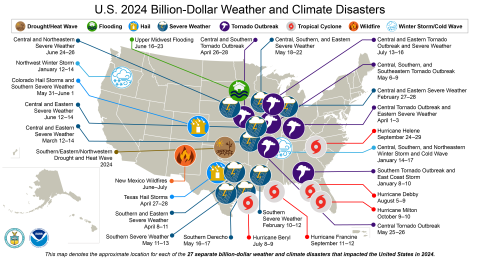
At the center of these disasters is property insurance. Anytime someone’s home or business is damaged or destroyed in a fire or storm, they expect their insurance to foot the bill to recover and rebuild. Yet in Southern California, thousands of homeowners were dropped by State Farm a few months before the fires, and in Western North Carolina, almost no one had flood insurance.
Insurance at a crossroads
Property insurance has reached a crisis point – but in crisis is also opportunity. In their roles as both insurance providers in case of disaster and major institutional investors, big insurance companies have the unique power to determine what our future looks like.
These companies could continue business as usual – a vicious cycle of insuring fossil fuel projects and investing in fossil fuel companies to make a quick profit, all while dropping policy holders in climate-vulnerable areas and raising rates on the rest of us.
Or these companies could begin a virtuous cycle of phasing out insurance and investments for fossil fuel projects and companies that make the climate crisis worse, choosing instead to use their record profits for underwriting and investing in the clean energy transition.

The first choice leads to an uninsurable future that permanently undermines the entire economy. The second choice leads to an insured future that lays the foundation for sustainable prosperity.
As a Senate Budget Committee report from December 2024 put it:
One thing is certain: unless the United States and the world rapidly transition to clean energy, climate-related extreme weather events will become both more frequent and more violent, resulting in ever-scarcer insurance and ever-higher premiums. This is predicted to cascade into plunging property values in communities where insurance becomes impossible to find or prohibitively expensive — a collapse in property values with the potential to trigger a full-scale financial crisis similar to what occurred in 2008. To avoid such a devastating fate, we must speed the transition to clean energy and eliminate carbon pollution. Climate change is no longer just an environmental problem. It is a looming economic threat.
Senate Banking Committee, Next to Fall: The Climate-Driven Insurance Crisis is Here -- and Getting Worse
Insuring our future
In its eighth annual scorecard and report, Insure Our Future -- a campaign comprised of environmental, consumer protection, and grassroots organizations holding the U.S. insurance industry accountable for its role in the climate crisis -- explores the relationship between climate change and property insurance companies worldwide.
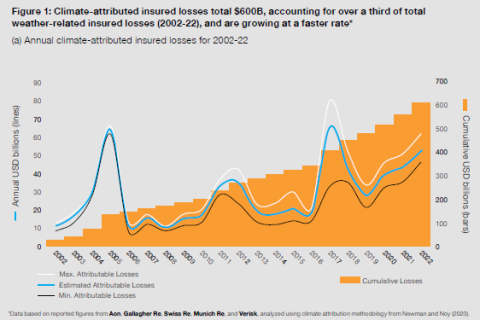
The report, Within Our Power, has five eye-opening findings:
- Over one-third of weather-related losses in the past two decades – a total of $600 billion -- can be attributed to climate change. That’s an average of $30 billion per year.
- Climate-attributed losses account for a growing share of insured weather losses, showing that decarbonization is crucial to contain soaring insurance costs. Climate-attributed losses are now 38% of insurance payouts, $52 billion of $132 billion in 2022, and growing at 6.5% per year.
- Climate-attributed losses for 28 top property and casualty insurers totaled $10.6 billion in 2023 – almost equaling the $11.3 billion they took in premiums to insure fossil fuel projects. For more than half of companies, climate-related insurance payouts exceeded fossil fuel premiums. Yet revenue from fossil fuel premiums represents only 2% of their business.
- Insurance premiums for the renewable energy market was less than 30% of the fossil fuel insurance market in 2023, pointing to a bottleneck for up to $10 trillion in clean energy investments. US insurance companies especially lag in the proportion of insurance for fossil fuels over renewable energy.
- At the brink of 1.5°C, insurers are abandoning at-risk communities worldwide while enabling fossil fuel expansion that drives these risks higher – requiring immediate policy and regulatory action. Last year the Italian insurer Generali broke the cycle by ruling out oil and gas expansion, including LNG terminals.
Policy prescriptions
Insure Our Future, as well as Ceres and Climate & Community Institute, have all issued reports outlining policies that could put the property insurance industry on a more sustainable path.
Insure Our Future’s Within Our Power report calls for integrating climate risks into the regulatory framework for insurance companies, overseeing insurers’ management of climate risks, allocating climate risks and costs to protect individuals and communities, mandating data transparency, using scientific climate scenario analysis, and requiring insurers to pay more for insuring and investing in fossil fuels.
Ceres' 10-Point Plan for the Insurance Industry calls for mandatory risk disclosure, predictive climate modeling, innovative insurance products, incentivizing climate mitigation, climate-adjusted pricing models, federal climate reinsurance, mandatory and transparent climate transition, climate-resilient building codes, equity and accessibility, and leveraging insurers’ investments.
Climate & Community Institute’s Shared Fates report views the insurance crisis as a housing justice issue, calling for the creation of federal and state Housing Resilience Agencies that would provide public disaster insurance, disaster risk reduction, address renters and mobile homes, and create climate advisory councils.
What can you do?
As an individual facing this insurance crisis, here are several things you can do:
- Share this blog post with your friends!
- Learn about how the largest insurance companies are insuring risky fossil fuel projects and investing in fossil fuel companies – and which ones invest the most.
- Use Green America’s Climate Smart Insurance Directory to find insurance companies in every state that do not insure fossil fuel projects and invest little to nothing in the fossil fuel industry.
- Find out how to shop for insurance by contacting several independent insurance agents in your local area, region or state.
- Tell over 70 executives at the nation’s largest insurance companies to stop profiting off fossil fuels while leaving customers holding the climate crisis bag.
- Check out Green America’s webinar on Responsible Home and Auto Insurance, with speakers from GreenFaith, Third Act, and Insure Our Future.
- Has your insurance premium skyrocketed in recent years, or have you lost your insurance? Call the Insurance Commissioner in your state to tell your story.
|
|
Responsible Insurance |
|
|
Nasdaq |
|
|
Green America FY24 Form 990 Public Disclosure |
|
|
Kroger’s New Move to Climate-Friendly Refrigeration is an Important First Step for the Supermarket Sector and the Brand |
Originally published in Cincinnati Enquirer on July 31, 2024
You won’t notice it the next time you go grocery shopping, but changes are happening in refrigerated aisles nationwide. Several major American supermarket chains are starting to do away with old, inefficient refrigeration systems and modernizing their stores to take advantage of cost-cutting new technologies, which also reduce emissions that contribute to climate change.
A handful of Kroger’s over 2700 stores are using natural refrigerants that are much less harmful to the environment. As the largest supermarket operator in the country, a move to natural refrigerants would represent an important shift for the industry and evidence that company leadership has been listening to consumer demand for the phase-out of older hydrofluorocarbon (HFC) refrigeration. HFCs are a “super pollutant” and potent greenhouse gas used in older systems, with up to 4000 times more global warming impact than carbon emissions when they leak. On average, leak rates in the sector are about 25%.
Given the forthcoming implementation of the EPA’s Technology Transitions Program, consumer sentiment and the increasing cost of HFCs, the move will benefit the environment, Kroger’s brand and the company’s bottom line. Starting next year, the Technology Transition rule under the AIM Act will go into effect, setting limits on the use of HFC refrigerants by sector, including equipment used in Kroger stores. To seize greater emissions reductions for the climate and to avoid higher refrigerant costs for systems at a time of decreasing HFC supply, it’s a wise business decision for Kroger to start its transition. Now Kroger should continue the transition by rolling it out to its over 2700 existing stores nationwide.
Kroger can follow the lead of competitors, including Aldi, Whole Foods, and Target, that are leading the industry on upgrading to natural refrigerants like ammonia, propane and CO2, which have zero or near-zero climate impact.
As the nation’s leading green economy organization, Green America has urged Kroger to publicly commit to adopting natural refrigerants in all new and existing stores and to develop a plan to phase out use of HFCs by 2035, with an interim target to heavily reduce HFC emissions by 2030. Changing a few stores to natural refrigerants is good but Kroger must go much further. We urge the company to make to eliminate HFCs from all new and existing stores on an accelerated timeline.
With the possible pending Albertson’s merger, Kroger could find itself with an even larger HFC burden to reduce due to regulatory and economic forces. Albertson’s is the second-largest U.S. supermarket chain after Kroger, using ultra-low GWP refrigerants in fewer than 1% of its stores and 50% of distribution centers. Although early-adopter companies are leading the way, most major supermarket chains are failing to act. Because of poor technology adoption, refrigerant management, policies and commitments, companies like Walmart, Costco, Publix, Giant Eagle, H-E-B, Wegmans, Wakefern, SEG and Trader Joe’s each performed poorly on the Environmental Investigation Agency’s 2024 edition of the Climate-Friendly Supermarkets Scorecard.
There’s an old saying that goes: the best time to plant a tree was 30 years ago, and the second-best time to plant a tree is now. The same is true for supermarket companies considering whether to invest in more efficient refrigeration technology. There is no time to waste. Protecting the communities the company serves can’t wait. And while Kroger has taken some initial steps on refrigerants, the company has much more work to do. The best time to eliminate HFCs might have been years ago, but the second-best time is now.
|
|
Inside ‘Teflon Joe’s’: Why your favorite grocery store is not what you think |
How Trader Joe’s remains a beloved brand despite record product recalls, safety violations, worker misconduct complaints, and an environmental record that belies its reputation.
|
|
Specialized says it donated $44,000 to unpaid factory workers. Did it? |
After months of fruitless negotiations, workers at a Salvadoran garment factory that closed without paying them thought they'd finally secured a win, but can't find any record of the bike brand's claimed contribution.
|
|
Green America: Kroger’s New 2024 ESG Report Shows Small Steps Forward on Climate-Warming Refrigerant |
Largest US Grocery Operator Commits to CO2 Refrigerants in New Stores and Propane for All Stand-Alone Refrigerator Cases.
WASHINGTON, DC – DECEMBER 18, 2024 – Following the release of Kroger’s 2024 ESG report, the nonprofit Green America welcomed small steps forward and called on the company to take more serious action to address hydrofluorocarbon (HFC) emissions from its stores’ refrigeration systems. HFCs are an extremely potent greenhouse gas, with thousands of times more global warming impact than carbon emissions.
In the new report, the company’s stated climate impact goals remain a 30% reduction from the company’s 2018 baseline. However, Kroger’s market-based scope 1 and 2 emissions actually rose 3.8% year over year from 2022 to 2023. Regarding refrigerants, which remain Kroger’s largest source of direct emissions, the company is committing to move to CO2 refrigerants at new stores, but states it is only converting existing stores to lower global warming potential (GWP) systems that can still have many times the climate impacts of natural refrigerants. Kroger is transitioning stand-alone refrigerators to ultra-low GWP propane refrigerants, with more than 15,000 free-standing units using propane. The company’s rollout of infrared leak detectors to all stores is increasing, but the company’s 100% rollout target is delayed from 2024 to 2026. Overall, Kroger continues to trail ALDI, Whole Foods, and Target in its commitments to phasing out HFC refrigerants.
Dan Howells, climate campaigns director at Green America, said: “Kroger, a leading grocery chain in the US, is taking minor steps forward on refrigerants. But its latest partial response to protecting the communities it serves from climate change will only continue to endanger the company’s reputation, bottom line, and customers. Kroger must show the company is taking serious actions on phasing out HFCs from all its stores.”
Following consumer pressure, Kroger recently announced that starting in 2025, new stores will adopt a natural CO2 refrigerant with low GWP. However, the company must do more to eliminate HFCs from existing stores. The company has stated that transitioning to ultra-low GWP refrigerant has the potential to reduce per-store emissions by more than 200 metric tons of carbon dioxide equivalent (MTCO2e) annually. This would translate to 550,000 MTCO2e if all of its 2750 stores moved to ultra-low GWP systems, which is approximately 40% of the company’s current total emissions from refrigerants.
Green America and its members are urging Kroger to adopt ultra-low GWP refrigeration in all of its nearly 2,800 stores by 2035 with interim targets to cut out HFCs and acknowledge that this requires transitioning to refrigerants with a GWP less than 150, not the 1,400 GWP standard the company has put forward. In the meantime, Kroger must adopt robust goals to further reduce leaks from existing HFC equipment.
ABOUT GREEN AMERICA
Green America is the nation’s leading green economy organization. Founded in 1982, Green America provides the economic strategies, organizing power and practical tools for businesses, investors, and consumers to solve today’s social and environmental problems. http://www.GreenAmerica.org
MEDIA CONTACT: Max Karlin for Green America, (703) 276-3255 or mkarlin@hastingsgroupmedia.com.
|
|
Economic Action: Our Proven Path Forward |
When political channels narrow, Green America’s economic strategies become even more crucial. For over 40 years, we’ve demonstrated that in our economic roles as responsible consumers, strategic investors, and innovative businesses, we can create profound change for people and the planet—regardless of who holds political power.
Our organization was born from that idea. In 1982, we launched as Co-op America to advance climate, environmental and social justice solutions through economic activism when the Reagan administration shut down progress through government action. That moment proved what remains true today: when political avenues darken, economic strategies light the way forward.
Over the decades, our economic strategies have been game-changers for justice and the environment. In the 1980s, we helped to birth the socially responsible investment movement and lead the fight against apartheid in South Africa. When Nelson Mandela was elected, his economic ambassador came to thank Green America and our social investor allies, telling us that the divestment movement was one of the top three reasons they succeeded in eliminating apartheid’s worst injustices.
Through the Bush presidencies, we transformed corporate supply chains to protect workers here and around the world when the government did not. When we challenged major athletic footwear companies about sweatshop labor, many didn’t even know their own supply chains. Today, they credit our campaigns for forcing them to identify and clean up labor abuses throughout their operations.
We helped establish and lead the Green Business and Fair Trade movements, creating innovative market-based solutions that larger companies began to emulate. As a result, scaled environmental and social solutions have evolved far beyond what government action alone could achieve.
And when it comes to workplace innovation, Green America practiced what we preached—adopting the four-day work week and remote work options back in 2001.
These decades of collaboration with you, our members, along with families, business owners, investors and allies from every corner of society, have created powerful networks and proven strategies capable of withstanding political storms to advance environmental and justice solutions through economic activism.
As we face a new hostile administration in Washington, D.C., Green America’s promise to you is that together, we will accelerate our work to create a green economy that works for all.
We know that progress only comes when we work together to achieve it. Progress demands action. With you by our side, we’ll scale our proven economic strategies into even bolder solutions for the climate, environmental health, safe and just labor conditions, equitable access to basic human needs, and the right of people to live fully as their authentic selves. We’ll continue to provide the tools and resources you need to green your life, strengthen your communities and take action for a better future.
Together, we are powerful.
|
|
Green Giving Is the New Way of Generosity |
Community is critical for humanity to thrive. In times of uncertainty, having people to catch and provide for you is how we face the future with strength and empathy. Now, at the dawning of a new year, Green America encourages you to rethink generosity and how we can give more holistically to our communities and those in need.
Try Gifting to Strangers
Everyone deserves gifts, the joy of opening something specifically for you from someone who loves you. But love is limitless and can extend beyond your circle. If gift giving is your love language, consider participating in a gifting program.
Transanta is a mutual aid project founded in 2020 that “connects anonymous gift-givers with trans youth who are unhoused, in foster care, or otherwise without crucial support they need to thrive.”
Kyle Lasky, a co-founder of Transanta, explains they developed this project with Indya Moore and Chase Strangio “to make a big impact on young lives by tapping into the immense power of mutual aid and direct one-to-one giving.”
“I think our program is so successful in part because of the empowerment and joy that people feel when they know they are directly responding to an individual’s request for help,” Lasky continues. “There is so much power in understanding you CAN make a difference.”
Gifts and drives don’t have to be limited to the holidays. Organizations like Transanta need support year-round to continue operating, and other groups host drives throughout the year.
The Family Giving Tree hosts a back-to-school drive and offers help and support for you to run your own drive. At Children’s Hospital Los Angeles, they accept toys no matter the time of year. After all, it’s never a wrong time to play with Barbie or cuddle a teddy.
CityTeam is a Pacific Northwest-based nonprofit that offers a variety of programs to get involved with, from mobile pantries and pop-up closets, vocational training and mentoring, and case management.
Across the country in Boston, The Home for Little Wanderers, the oldest child welfare agency in America, is an intensive foster and adoption organization. But that’s not all—they also organize drives of all sorts: clothing (coat and jacket specific drives in winter), hygiene kits, gift cards, sporting goods, and more. They also offer support for people to organize their own drives.
You Don’t Need Money to Give
Though volunteerism peaks at the end of each year, Americans are giving their time back to their communities less than ever, according to AmeriCorps. Looking ahead to a more empathetic and generous future, maybe it’s time to address that.
Fortunately, there is volunteer work for every interest and skill set across the board, from soup kitchens and elder companionship to nature conservancy and administrative work. Talk to your friends and community leaders, search your city + volunteers online, and you will find an abundance of ways to give back.
Donating pre-owned items like clothing, books, games, and beyond is another green way to show generosity. Women’s shelters, children’s hospitals, mutual aid groups, and migrant shelters are often in need of supplies—just be sure to check organizations’ websites to see if they have guidance on what they do or do not need. Additionally, many teachers post annual calls for supplies needed to help stock their classrooms.
But that’s not all—you can also consider donating gifts to do a green gift exchange with friends.
Don’t forget that gifts don’t have to be brand new to have meaning. Does your friend always borrow that sweater you never wear anymore? Get it dry cleaned and package it up like new for their birthday! Any gift exchange can be donation-based, taking pressure off money spent or shopping around for the perfect gift.
Go Beyond Giving Season
Though this time of year boasts the highest levels of generosity, it’s imperative to take it beyond December and into every new year ahead. Most organizations depend on support year-round to continue operating, and there’s never a wrong- time to give back in any way. With the rise in frequency of natural disasters, inflation, and global conflict, generosity is needed more than ever, especially for vulnerable populations. “It takes a village” applies to all of us, strengthening the very fabric of our communities and providing refuge in the face of an uncertain world.
|
|
History And The Stars |
History gives me comfort even in the most troubling of times. When this current moment seems overwhelming, I remind myself how our ancestors fought for a better world—often against greater odds. Their stories inspire me, and history tells me that the hard path to a better world has been worn deeply from centuries of effort. History lets me know that regardless of where I am in the cycle of success and failure, I need to get up and walk down that road to do what I can, while I can.
In his final speech, Dr. Martin Luther King Jr. discussed history. He was in Memphis, Tennessee to support a sanitation worker’s strike. The end of his speech is well known, but the opening has helped me process this moment of grief, fear, concern, and challenge.
Dr. King began with a discussion about what he would do if the Almighty offered to let him live in any moment of history. After considering so many pivotal moments of history, from ancient Egypt to the events that led him to be in Memphis, Dr. King said:
I would turn to the Almighty, and say, “If you allow me to live just a few years in the second half of the 20th century, I will be happy.” Now that's a strange statement to make, because the world is all messed up. The nation is sick. Trouble is in the land; confusion all around. That's a strange statement. But I know, somehow, that only when it is dark enough can you see the stars.
The stars that Dr. King saw that night were the movement—the people fighting for change—before his time, in his Memphis audience, and now.
Dr. King’s target time zone has been within my lifetime. I was born in 1956. The list of real victories for people and planet since then is impressive, especially when compared with the thousands of years of recorded history before my birth. And I have seen, over and over again, how significant victories are often followed by moments of pushback motivated by profit, fear, hate, and abuse of power.
In 1980, we were at a similar moment to the one we are in now. After an election fraught with dirty tricks and a questionable process, Ronald Reagan became President. He came to Washington, D.C., committed to overturning decades of gains made in Civil Rights, in labor justice, protecting the planet, promoting peace, and a more just world. The federal government was not going to be a partner on the path to a better world, it was going to be an adversary to those fighting for equity, justice, and social safety networks. A new way to create change was needed, one that provided ways for us to mobilize the economic powers we have as consumers, investors, workers, business owners, and community members to collectively push the world to a better place. It is in that space of hope—even before Reagan took office—that the mission of Green America (then called Co-op America) was created. Since then, working with coalition partners, green businesses, and—especially—with our members, we have made a difference.
The last forty plus years has not been free of trying times and through it all, Green America has paved the way towards a better world through inspiration, resources, education, campaigns, and hope. Since 1998, I have been part of this dedicated team, and sometimes I marvel at what we have accomplished. It is why, even in this disturbing moment of time, I have hope.
In the words of Dr. King, it feels like “that’s a strange statement” for me to make. Right now, the idea of “hope” seems strange and distant. And yet, I have hope. Why? Because of history. Because we stand on the shoulders of giants. Because we walk this path to a better world together.
Like Dr. King, if given the opportunity to be anywhere in time, I would also choose the moment that I am in—this moment in the 21st century. This moment when we get to walk the path together to make the world a better place.
It is dark now, but as Dr. King said, “…only when it is dark enough can you see the stars.” Stars are light traveling across time. They are the light of our ancestors guiding us on the path towards justice, shining in the sky to let us know that our time is now.
We are the stars we have been waiting for. And it is an honor to fight for change with each of you.
|
|
The Winds of Change |
The mountains of Asheville, North Carolina, were my first love. Rushing rivers and the whisper of the wind through the trees taught me from an early age that my peace and clarity are found in the quiet corners of the Earth. In a world consumed by noise, screens, and schedules, the outdoors is my escape—an antidote to the frantic pace of modern life.
I’ve always been conscious of my impact on the world around me. Supporting sustainability is as natural to me as breathing. But since Hurricane Helene devastated my hometown and my country elected a president who opposes climate action, it feels like the air is being squeezed from my lungs. Our political landscape has torn up my roots, violent and unforgiving, ripping away the comfort Appalachia has given me so freely. Our Earth is suffering, and we can no longer ignore the way nature, the way so many of us, are being pushed to the brink.
Just as the land has been bled dry by the demands of progress, so too have women been expected to bend, to give, to carry the weight of a system that takes and takes without regard for what it costs. My existence as a woman is tinged with grief, knowing that we, like the Earth, are too often ignored until we are broken. To me, advocacy is not just about fighting for a cleaner planet or a more equal society; it is about reimagining what it means to care for both people and nature.
Hurricane Helene battered Western North Carolina and surrounding areas in the southeastern U.S., and marginalized communities of immigrants, BIPOC, LGBTQIA+ folks, and disabled people have long been battered by systems built to silence them for the comfort and profit of the privileged. Just as hurricane victims should not be left to rebuild their communities alone, marginalized groups should not solely bear the responsibility for dismantling oppressive systems. True justice is achieved when we use the power and privilege we have for the collective good. If western North Carolina can come together to repair roads and roofs, we can come together to create lasting change. If we are to protect the Earth, we must protect each other. We must recognize that our fates are intertwined, that when one of us falls, we all feel it. Our collective strength is what will carry us forward—whether we are fighting to preserve the land we love or to ensure that silenced voices are finally heard. Mother Nature is strong, resilient, and empathetic. She cannot be used and discarded; and neither can we.
The winds of change are not so different from the winds of a storm. They are powerful, relentless, and they shape everything they touch. But if we can listen closely enough, perhaps we can learn to move with them, not against them, and find a way for the Earth, for all of us, to rise, unbroken and free—together.
|
|
Anger Asks Us To Act |
My advocacy comes from a place of anger.
When it comes to advocating for a better world, the message is usually towards a joyous future of community and love. And while joy is part of my advocacy, too, it’s not the lens in which I view the world, politics, or society.
I am a woman. I have an immigrant Filipina mother and a blue-collar white father. Conversations around class discrepancy, bodily autonomy, human rights, and history were frequent at our dinner table and PBS documentaries were a staple on the television. I inherited my passion for justice—and my anger at injustice—from my family.
For a long time, I didn’t know where to put that anger. I tried to sate it with hope for the future and the belief that someone, somewhere, would do something to end cycles of harm and injustice. Coming of age under the Obama administration also gave me hope that America could improve on its racist past. But when Trump was elected in 2016—the first Presidential election where I could vote—the shock that Americans would vote in an unapologetic bigot and misogynist left me hopeless for the first time.
But hope is a fickle thing. It doesn’t truly give up.
In 2019, I joined Sunrise Movement, started organizing, and found community in political activism for the first time. I felt fired up, engaged, and ready to channel my righteous anger into something politically and socially productive, like the Green New Deal. It was therapeutic to learn that I didn’t need to wait on someone, somewhere, to end cycles of harm and injustice—I could do it myself, with others that cared.
And then the COIVD-19 pandemic hit. I read breaking news stories of Asian women and elders getting attacked, beaten, and killed because of xenophobic rhetoric. I worried for my mom and my sister, living hundreds of miles away. I worried for myself, living in a neighborhood of vocal Trump supporters who did not wear masks because the virus was a “hoax.” I worried about my partner, who is considered high-risk, around people coughing open mouth in public.
That first year of the pandemic taught me that people often value what is most convenient for them over the good of the collective. I had read this in history books, but seeing it play out in-person broke my faith in humanity. It took years to surface from that dark place of apathy; truthfully, it’s a hole that I sometimes fall back into.
Today, my apathy and anger are a balancing act. Getting wrapped up in rage is overwhelming, even though it is great fuel for an activist’s fire. But without a proper outlet, that flame burns out. When we experience burnout, we grow numb. And if we become numb—if we stop pushing back—we lose.
Anger is useful. Like all emotions, it’s a mind and body response to external influence. As a woman, society taught me that my anger was improper, unladylike, and undesirable—something to be suppressed for a more polite emotion. But I’ve learned that it’s healthier to express these emotions rather than bottle them up. I choose to express my anger through productive means like advocacy for a world where people and the planet are heard, cared for, and respected.
Temperature checks in community spaces, among friends and family, and online forums show that anger is a shared feeling in the wake of shock and tragedy. And that shared feeling of disappointment, of injustice, of fury, is a powerful wellspring of momentum.
Anger asks us to yell, to fight back, to push harder still. Anger begets action. And action keeps apathy at bay. If anger is what it takes to act, then be angry. And make change.
|
|
In My Blanket Fort of Solitude Until Further Notice |
I’m a millennial, and our generation has a saying: “I am so tired of living in unprecedented times, I would like to live in precedented times, please?”
There are many ways to interpret this but to me, in this moment, it speaks to a very long history where women like myself—Black, middle-aged, professional—have gone to bat for human rights time and time again. We have marched for countless just causes, whether they are directly related or adjacent to our communities, because we believe that no one is free until all of us are free.
We see ourselves in the struggles of others and we know the injustices visited upon our family members and ancestors. We’ve strived to undo generational curses by pushing for access to health, wealth, and education. As it stands, Black women are the most educated population in this country; we open more small businesses, and we achieve more business growth than our counterparts nationally. Yet our rise to the top is still hindered by inaccurate portrayals in the media to feature us as wild, aggressive, unprofessional, and angry. I’m quite tired of these tropes and how they’re used to deny us our humanity.
In this election, we finally saw a candidate who could intimately understand where we were coming from, had lived experience with the issues that meant something to our communities, and might finally prove that Black women and other women of color shouldn’t consistently be trapped on the bottom rungs of society.
The election results might feel mind-blowing to some, but for us, it fits an infuriatingly centuries old pattern that we’ve seen all too often. Justice Ketanji Brown Jackson, Former First Lady Michelle Obama, and of course Madam Vice President Kamala Harris—all accomplished and educated Black women who, despite achieving historic levels of success, have been consistently portrayed in the most disparaging spotlights. Our collective experience as Black women is one where our humanity is never seen, and we can never be good enough.
Our exploitation and labor have nurtured this nation since its inception. We were forced to let go of our own children to care for those of plantation owners and overseers; we watched our families torn apart, our men beaten and emasculated. We were denied the right to vote even when our White counterparts could. We fought tooth and nail to be educated and for our children to have a safe and joyful future. We have been a support system for not only our communities, but to the humans we’ve encountered along the way. We have struggled not to be seen as loud, angry, or classless, despite having every right to our fury. Black women have answered the call for each and every social movement in the belief that this time, we could make a difference for others as well as ourselves. We have pushed for this country, for the world, to see us as worthy of the same compassion and care we’ve given others.
And though we are not monolithic, we are all tired.
Every time I open my mouth, I know that I will have to fight being seen as not enough, again. Someone is always waiting in the wings to explain to me what they think I can’t possibly understand on my own, or they urge me to just do it their way since they know better. It’s exhausting being subjected to this normalized condescension, especially when I have proved in many ways how I am more than enough.
This is why Black women, Black people, are saying in a collective voice: not only are we enough, but we have had enough.
This is a basic truth the rest of this country needs to understand as we all find ways forward. The turn in this political landscape is less about the differences in policy and more about a vast divide in whose humanity matters and how to use power morally. We are looking for what we give and how to move away from individualism and towards an authentic and empathic society. We want others to not just bear witness to what’s happened, but to also actively take up the burden we have shouldered for far too long. The issues which brought us here are systemic and so the solution must be, too. It is non-negotiable.
Until this truly happens, we are resting. Our capes are blankets, our feet are up, our souls will be nurtured as we care for our vulnerability as much as our strength. We didn’t get here alone and cannot fix this alone. We will wait to see what our allies and society will do, because until you give what we have, you haven’t done enough.
|
|
I Advocated for My Trans Body and Found the Strength to Fight for Others |
For nothing is fixed,
forever, forever, forever,
it is not fixed;
the earth is always shifting,
the light is always changing,
the sea does not cease to
grind down rock.
Being an activist is caring. It is disrupting and organizing. It is building and healing. Being an activist means understanding how deep bias and privilege are woven into our systems of government and culture. It requires our awareness of the impact we have on our neighbors, our planet, every living creature, regardless of our intentions. It is a weight on the mind, body, and spirit, and it is necessary.
One of the most defining moments of this year for me was the death of non-binary student Nex Benedict, caused directly by the war on transgender people’s bodies and wellbeing. It was a direct act of hatred toward the most vulnerable in my community. I felt lost, overwhelmed, and mournful. But there was more to do, there was always more to do for the innocent lives being regulated by archaic laws, blown apart by global conflict and genocide, gnawed at by hunger when forgotten.
It is fertile ground for burnout to take root.
Although the World Health Organization defines burnout as a “chronic workplace stress,” Emily and Amelia Nagosky, authors of “Burnout,” offer a simpler and more effective definition: “being overwhelmed and drained by everything you have to do and, yet, somehow still feeling worried you’re not doing enough.”
Advocacy burnout comes from a well-intentioned place, but the result is still the same: a mind and body dangerously depleted of the energy needed to care for others, not to mention oneself.
Fighting for my family—remarkable trans youth, powerful trans women and men, genderqueer and non-binary baddies, two-spirit forebears—is the matter closest to me. I wanted to refocus where my energy is best spent, accept my own limits, and trust in my comrades.
In 2024, I became a mentor with the Trans Mentor Project by the Sam & Devorah Foundation for Trans Youth. Through this program, trans adults are paired with trans minors and young adults to provide a safe space, connection, and empowerment.
As the Fred Rogers quote goes, “look for the helpers.” Being a mentor for trans youth is the perfect way to give back to my community and a source of great joy, without exhausting my energy, financial reality, or purpose. By respecting and honoring my own boundaries, I am also able to take the time to check in on my community and provide support.
Generations do not cease to be born,
and we are responsible to them
because we are the only
witnesses they have.
A key lesson for me this year was expanding my care and advocacy to a global level, granting me the chance to see and feel the ache of other bodies even beyond my community.
Invisible borders, built on centuries of imperialism, cannot and must not hinder our advocacy branching outside of our own country.
In November, the UN Special Committee to Investigate Israeli Practices concluded “Israel’s methods of war [against Palestine] align with the characteristics of genocide.” They clarified: “This is not a temporary crisis; it is a lasting catastrophe for the people of Gaza,” in which clearing only half of the debris could take 45 years and some environmental damage may be irreversible.
It is something no one should abide by. Here in the U.S., we’ve seen similar devastation before: the Trail of Tears, America’s enslavement of Black people, the internment of Japanese Americans, and hundreds of thousands murdered by the US government’s disregard for Black, Brown, and queer bodies during the AIDS crisis.
I know how history views trans and queer bodies as unimportant and disposable. In his book “Queer Palestine and the Empire of Critique,” Sa’ed Atshan describes “pinkwashing,” in which governments use queer existence to justify genocide. As an example, Atshan refers to the tactic of painting the state of Israel as a “gay haven” while “eliding queer Palestinian agency,” which implies the “superior humanity” in one group over another.
Thousands of miles away, I refuse to stand by and watch intimate violence against marginalized bodies, against my own trans and queer brethren, simply because the West has allowed and contributed to it. There is safety and dignity in having one’s body valued, and with that comes a future of autonomy and sacredness for trans bodies, Palestinian bodies, and the body of our own planet.
The sea rises, the light fails,
lovers cling to each other,
and children cling to us.
Advocating for others, though, is predicated on advocating for yourself. You can’t pour from an empty cup, but neither can you pour from a battered and bruised cup, energy and compassion dripping through untreated cracks.
That is what I felt like before getting top surgery at the start of the year.
Every day that I woke up in a body I didn’t recognize, it was agony. To the point that even the mundane became a battle—walking my dog, getting dressed, seeing myself in the mirror before stepping into the shower. How could I help give voice to queer Palestinians, or be an asset to my own neighbors, if I was pouring all my energy into fighting my own hatred of my body?
I wanted to be a better version of myself, one who could be fully present in themselves and show up for those I cared about. So, I sat my wife down and said: “I need to get top surgery. I need it to survive. Our healthcare system is a mess, gender affirming care is being attacked on all sides, but I will figure it out.”
Getting top surgery was one of the easiest decisions I’ve ever made, second only to marrying my wife.
ow, I wake up and want to cry tears of joy when I see myself in the mirror. Finally feeling right in my body alleviated crushing stress and pain, which in turn allowed space to be more present for my wife, my friends, and my community, both locally and across the globe. It is something I can share with my mentees to more authentically help them navigate their own dysphoria and affirming needs. After years of internal strife, I loved myself and learned how to better love others.
The ecstasy of touching someone you love, nourishing your hunger, climbing a mountain to see our world from a different perspective, it is nearly overpowering when your body is safe, cared for, fought for. I believe this feeling is an inalienable human right—for everyone.
The moment we cease to hold each other,
the moment we break faith with one another,
the sea engulfs us and the light goes out.
—James Baldwin, “For Nothing Is Fixed”
|
|
Environmental Advocacy is the Work of a Lifetime |
I became an environmental advocate in the 1980s. I was at college in New York City when I saw an ad in the Village Voice from New York Public Interest Research Group (NYPIRG), looking for activists to fight garbage burning incinerators. Little did I know that the job involved going door-to-door, day after day, for hours on end, attempting to get people to sign petitions and make small donations. Most people didn’t open the door, and several slammed it in my face.
But I loved that job. I bonded with my fellow canvassers over the weirdest responses we received and cheered each other up when we had a bad day. We ate donuts and drank beer after canvassing and rode the Cyclone at Coney Island. Then we crashed at two in the morning and got up the next day to do the same thing again.
The people I talked to were often alarmed by the prospect of giant incinerators being built nearby that would spew pollution on their community and affect their families. They were angry that the incinerator industry claimed burning garbage for energy was a clean energy solution when much of that garbage could be recycled or composted instead. They signed the petitions and donated what they could, and some of those incinerator proposals were defeated as a result.
During the intervening decades, the lessons I took from that early job—be persistent, connect with people where they are at, and take part in a community of activism—are still with me as I continue working to create a greener and more just economy and country.
At Green America, when we reach out to corporations to urge them to green their practices—by ending the use of coal-fired power plants, eliminating toxic chemicals, reducing their paper consumption, and investing in clean energy—the first response is usually a metaphorical slam of the door in our face.
But we keep knocking because what we’re asking those corporations for is entirely doable, and will ultimately benefit their operations, as well as the planet and all of us who live on it. And we know that most people agree with us. According to a 2024 report from the Walton Family Foundation, over 75% of adult Americans support clean air and water and protecting soil health. We see that support whenever we ask Green America’s members to join our demands for companies to act responsibly and sustainably. Thousands of you consistently answer those calls because you know that you, your families, and your communities deserve clean air and water, healthy forests, safe food, and solutions to climate change. You are tired of large corporations profiting at the planet’s expense and your own.
We make it so corporations can’t ignore us, working with allies—other environmental justice organizations, investors, local activists, even employees within those corporations who also want their employers to do better—to increase the pressure. Eventually, those companies respond to our efforts by promising to act. What they do is often not all we’ve asked for and they never credit these collective efforts for moving them forward.
But it’s still a step in the right direction, and we can leverage that progress to get their competitors to follow suit. Sometimes, the people at companies who yelled at us or mocked our dedication to sustainability now ask for our help in making them greener. The results include massive purchases of clean energy, preserved forests, food that is safer to eat, and clothing and electronics that are made without the most toxic chemicals that poison workers and communities.
Those steps toward a greener world are worth protecting.
With this election, we’re getting an administration and Congress hostile to any attempts at creating a more sustainable environment and who are willing to sacrifice the health and future of others for their own short-term gain. What keeps me going is knowing that most people who live in this country want a healthier world for themselves, their children, and their communities. When government fails to create laws and regulations that protect the health of people and the planet, it’s up to us to take our concerns directly to corporations and make them listen to their own customers and investors.
But people are also tired. Many are completely disillusioned by the political system and some may no longer vote. It’s our job to connect with those people and encourage them to use their voice for change by affirming their communities matter, their concerns are included in the policies we advocate for, and if they take action, they won’t be alone. We help them join with tens and then hundreds of thousands of other concerned Americans as they take action with Green America and our allies to urge corporate America to change. Belief in the power of collective action and care for each other is at the heart of Green America’s story.
Green America was founded in the 1980s when the Reagan administration was in power and dismantled environmental laws and regulations—symbolized by immediately ripping off the White House solar panels the Carter Administration installed. As the government moved increasingly to the side of corporate polluters, Green America helped create the green business and consumer movements. We helped launch the socially responsible investment sector and worked with allies to promote the corporate social responsibility movement. Together with our individual members, Green Business Network®, and our allies, we created the green alternatives to business as usual, many of which have been adopted by the mainstream.
Now, we are facing a reinvigorated government backlash against environmental and social justice, intent on rolling back all the progress we’ve made. We need to redouble our efforts to get corporations to commit to and implement clear and actionable progress on environmental justice. We’ve done it before. In the first Trump Administration, after the administration withdrew from the Paris Climate Accords and shredded environmental regulations, renewable energy on the U.S. power grid still increased by nearly 50%—thanks to corporate, state, and local action. States placed restrictions on several of the most toxic chemicals, and we got some large corporations to voluntarily restrict them.
Even in the dark times ahead, if we work together on policies at local and state levels, and keep up the pressure on corporations, we can not only protect the gains that we’ve made, but we can also keep making progress on climate action, environmental justice, and protecting people from toxic chemicals.
|
|
Feeling The Weight of Our Words |
This isn’t the Green American issue that we had originally planned, but in the wake of the 2024 presidential election, it is the one we feel called to create.
The return of the incoming administration to the White House was always a distinct possibility, no matter how much we might have worked for a better outcome. And regardless of who took their place in the Oval Office in 2025, we knew that there would still be a need to press our government and corporations toward implementing and enforcing policies promoting sustainable energy production and supply chains, fair labor, and social justice.
None of that negates how overwhelmed many of us have felt since the election, however. More than anything, I’m tired of joking that I’m not mad, I’m just disappointed. Because I’m not just mad, I’m a barely contained mess of fury and grief and fear—for my country, my loved ones, and for myself as a daughter of Filipino immigrants.
Let’s be clear: Being disappointed by the loss of a particular candidate you personally supported is not the same as being horrified by candidates brought to power by stoking waves of bigotry, cruelty, and utter selfishness. And openly expressing our exhaustion, frustration, and grief does not mean we’re not ready or willing to get up every day to give our best in service to the causes we believe in.
Green America will not accept that false equivalence, nor are we ever giving up.
The ways people are processing what happened and what’s coming next can’t possibly fit within any neat and tidy boundaries. The immediate future we face as a country will be under heightened stakes, not “business as usual.” And it would be hubris to pretend Green America has the answers about “the right way” to feel and what we “should do” moving forward.
What we can do is share the enormity of this moment and be open about where we find ourselves, both as an organization and as a diverse array of people who bring their whole selves to the work we do at Green America. In response, we’ve created a Green American issue with a much more personal focus and perspective than has been typical in the past. In addition to sharing Green America’s moments of success from this year and suggestions for enacting green generosity beyond the winter holidays, six Green America staff members contributed personal essays sharing what advocacy means to them at the end of 2024. We have also included an organization-wide reflection on what Green America has learned from four decades of navigating the cycle of change in federal administrations and how we plan to not just defend the gains that we’ve made, but to also keep pushing for progress.
I am deeply moved and appreciative of the trust and vulnerability in these pieces, especially knowing that we live in a culture and country where historically, not all people are given equal space and benevolence for free expression. Many of our readers may recognize these writers or have worked with them in the past, but for me, these pieces have provided a deeper glimpse into the experiences of my coworkers who I’ve only known for eight months.
Todd Larsen celebrated his twenty-fifth anniversary with Green America soon after I came on board, but I hadn’t known his experience with direct environmental advocacy went all the way back to his college days in the 1980s. Watching Todd lead our climate and worker justice campaigns by leaning into economic activism, it’s easy to see how his thoughtfulness, keen insight, and willingness to learn from discomfort stem from those early days knocking on doors to talk with people in New York City neighborhoods about environmental issues.
Dr. LaKeisha Thorpe and I immediately bonded over a shared love of Star Wars and pop culture, but what I’ve enjoyed the most is seeing how she weaves justice, equity, diversity, and inclusion (JEDI) principles into every facet of her work. Barely two years into her tenure with Green America it’s clear how we are a better organization and more empathetic people thanks to her encouragement to challenge our unexamined assumptions. The ways LaKeisha is leading our programs to push even harder on JEDI work is a constant source of inspiration.
I couldn’t ask for a better editorial team than Mary Meade and Anya Crittenton, both of whom are incredible writers. Mary’s expertise, particularly in online communications and Green America’s library of articles, has been invaluable support in my new role. And since taking the lead on layout with the most recent Your Green Life issue, she’s revealed a fresh and energetic eye for design.
Anya’s dedication to living a green life and enthusiasm for social justice is evident in both their professional and personal lives. Whether telling compelling stories about everyday Green Americans or helping Green Business Network® members navigate the complex transition to sustainable business practices, Anya is a fierce and selfless advocate for others.
I was in college when Al Gore began speaking about climate change and I can’t fathom what it’s like for folks like Emily Chambliss to face the onset of adulthood under today’s circumstances. Even though her time as our intern is finite, Emily’s clear and determined voice has been a constant reminder of the potential in the generation now coming of age.
Last but not least, Dennis Greenia has been a steadying anchor whose calm and friendly demeanor belies a tenacious belief in the possibility of a greener, more just world. He has been with Green America longer than almost anyone else and inhabited many roles, including production of this magazine and our other publications and as our Human Resources Director. Our team is so thankful for his dedication to protecting the benefits, such as access to reproductive healthcare, remote-supportive culture, and four-day work week, that Green America has traditionally provided for all our staff spread over 20 states and out of the country.
I’m proud of how these essays demonstrate a willingness to be honest and accountable to who we are as people. Words only carry as much weight as we’re willing to give them and immense harm often follows when people are not held responsible for what they say, especially when they occupy positions of influence and power. And as Green America has proven time and again, the weight of our words is always matched by the strength of our actions.
We are all capable of being many things at once—hopeful, grieving, angry, blunt, poignant, exhausted, determined—but most importantly, Green Americans are united by an abiding love for our communities and our planet. I’m reminded of a concept embraced by the late celebrated science fiction author Terry Pratchett—militant decency is the idea that not only is anger a natural reaction to witnessing the ills of the world, we should be intensely, incandescently angry about them—and then use that anger to fuel our efforts to make the world a better place.
Our government may have changed, but our dedication to Green America’s mission has not. Whether you are sad, lost, determined, frightened, or furious, your feelings are justified, we hear you, and we will continue to act in service of a greener, safer, kinder, and more joyful world for us all. We hope that somewhere within these pages, you can find what inspires you to feel seen, empowered, and anchored, so you may act with clarity and intention regardless of what lies ahead. It ultimately doesn’t matter if those actions are directed toward caring for yourself, focused into the bonds of intimate community, or spread outward to local, state, or national levels, so long as you stay guided by the beliefs that sustain you and the people you love.
That is the heart of Green Advocacy and we are proud to share it with you.
|
|
Together, We Are Powerful |
In the face of uncertainty, working together for a green economy is more important than ever.
|
|
Sustainable Gifts for Everyone on Your List |
The holidays are upon us and with them the flurry to find the perfect gift for loved ones. This year, consider giving to not just people, but the planet, too, by shopping our guide of sustainable gifts. From pets to the ones who say they don’t need anything, you’ll find a gift for everyone on your list.
Every item recommended in this article comes from our certified Green Business Network members, which meet or exceed Green America’s standards for social and environmental responsibility.
For the Coffee and Tea Drinkers
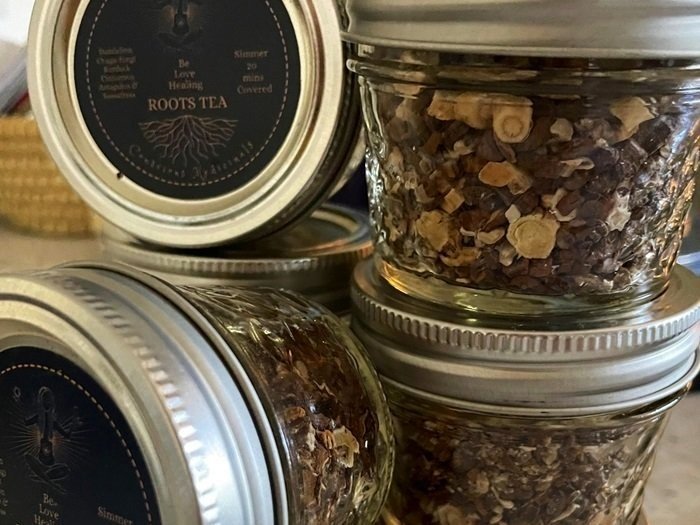
Roots Tea ($12) from Conscious Choices for All is a blend of burdock, dandelion, astragalus, and sassafras roots with chaga fungi. Tasting like snickerdoodle, this tea cleanses the liver and blood pathways.

Treated like a sustainable crop, organic tea is made without chemicals like herbicides or chemical fertilizer and grown with regenerative practices like crop rotation. For those who like flavored teas, indulge with loose leaf Organic Raspberry Green Tea ($3.50 - $25.50) from Arbor Teas.
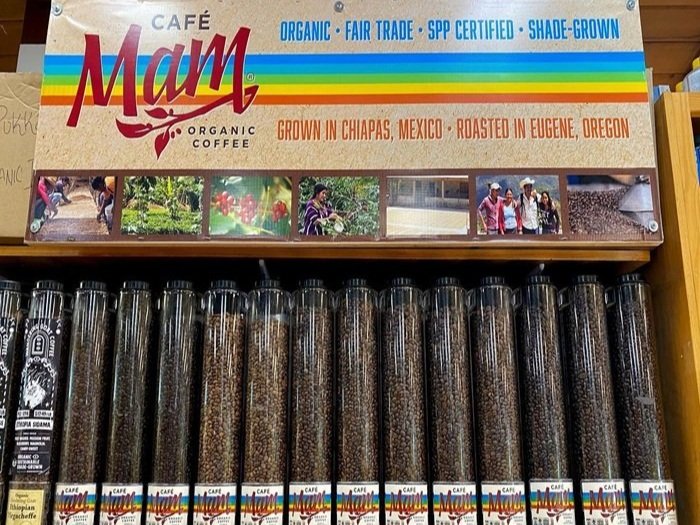
Are you an espresso snob? Enjoy some quality beans with Café Mam‘s Royal Espresso Blend ($7.50 - $55), a classic Italian espresso. It is flavored with dark chocolate, berries, maple syrup, and spice and also comes in decaf and half-caf.

People take their matcha seriously—and they should. Help your loved one take their matcha to the next level with the Matcha Set ($24.99) from Davidson Tea. The set comes with a matcha bowl, a whisk, and a finely carved spoon. It is designed specifically for ceremonial matcha, the highest quality grade of matcha used in traditional Japanese tea ceremonies, meant to be mixed only with water, made of younger leaves and known for its subtle flavor.
For the Homebodies

Add some color to the home with an eco-cotton rug from Hook and Loom. The Alford Stripe Eco Cotton Rug ($24 - $305) is made from freshly spun 100% recycled fiber and can be machine washed and tumble dried.
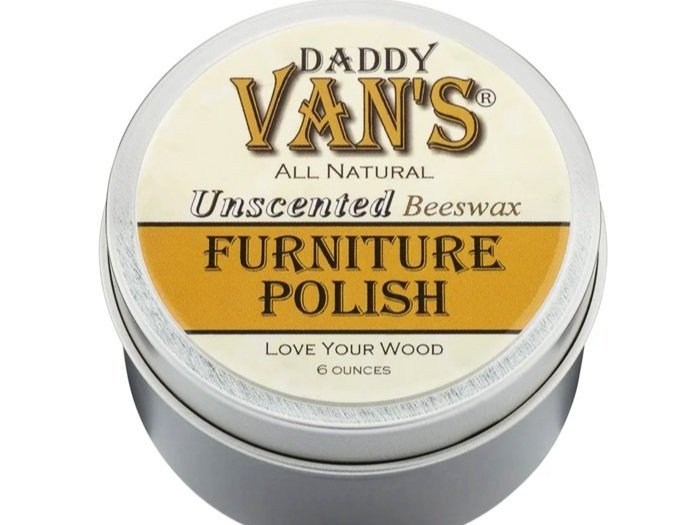
Daddy Van's All Natural Unscented Beeswax Furniture Polish ($16.98) is a great way to show your furniture some love. This USDA certified 100% biobased furniture polish is non-toxic and both food- and baby-safe.
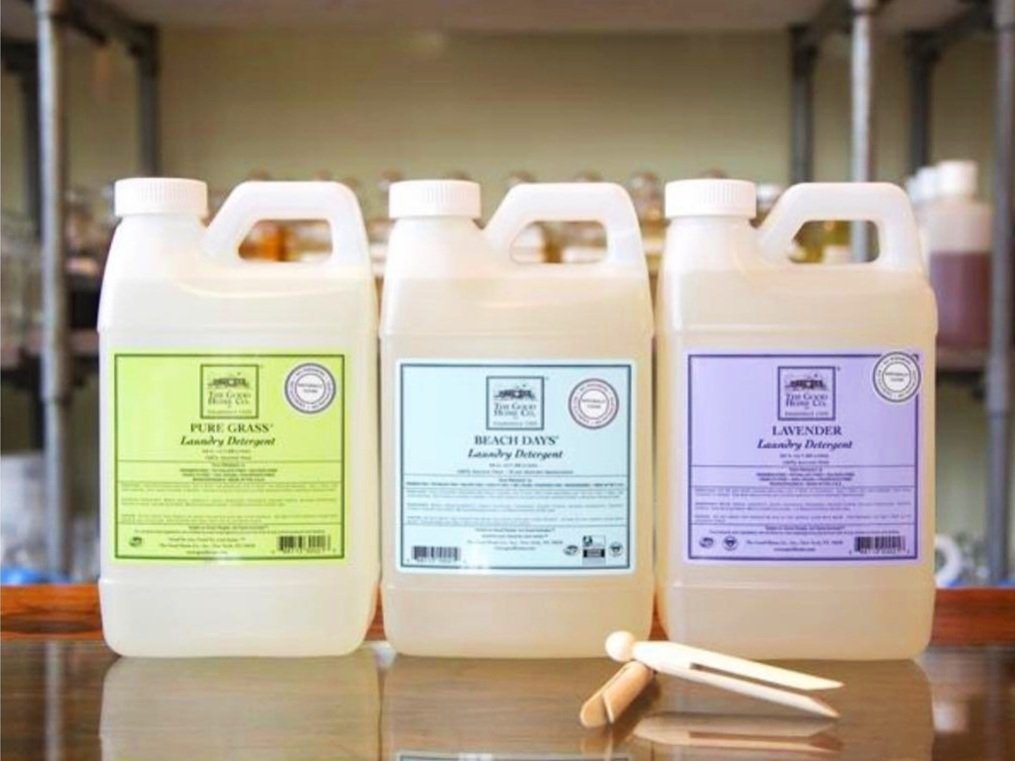
Laundry is an essential part of any household and though detergent may not seem like an exciting gift, you may be surprised at the joy when people receive things that help them out. So, try the laundry detergent ($35) from The Good Home Co. that comes in several scents like Beach Days, Lavender, Pine Forest, and more.

Your home should be a safe and healthy place. However, there are many ways for toxic chemicals to leech into the air, from cooking to painting or bad air quality outside. Make sure all your loved ones’ homes are as clean as possible with an air purifier ($549 - $995) from Pure Living Space.

Add some joy and whimsy to your home with the Peace Wreath ($32). Handmade using sustainable materials of Philippine Coral Tree wood wrapped in sustainably harvested galtang vine, this gift is from TenFold Fair Trade and can be customized with flowers, lights, holiday imagery, or whatever you want!

To all the readers out there who know the aesthetic of your bookshelf is paramount: get ready to have fun customizing your own bookshelf. The FlexModerne ($18 - $1,010) line from 57NorthPlank is the perfect project for a bookworm. And once they have it, get some VOC-free paint, and go to town!
For the Foodies and Cooks

Try some new foods in your garden for your next meal. Boothby Blonde Cucumber Seeds ($4 - $12.50) from Turtle Tree Seed produce 6-inch fruits with yellow-white tender skin and black spines, with a rich sweet flavor.

Pop open the bottle and enjoy wine the sustainable way with Frey Vineyards. Their organic and biodynamic wines are sure to please the greenest of wine connoisseurs. Try the 2020 Biodynamic Cabernet Sauvignon ($25) which is layered with allspice, huckleberry and underbrush, and finished off with graceful tannins.

Don’t underestimate the importance of quality olive oil. Canaan Palestine offers a variety of oils, including their Chili Olive Oil ($24), which is made with ancient landrace Souri olives and fresh whole chilis that are crushed together at the olive press. This production method requires precise agricultural artistry in coordinating harvests for chili to be at their peak of flavor in time for the olive season.

With a higher smoke point than olive oil, grapeseed oil is also good to have on hand, especially if you’re cooking with stainless steel (a non-toxic option for your cookware). Food & Vine offers different versions of grapeseed oil ($13.95+) and bottle them in unfilled wine bottles from local wineries.

Make pizza night more fun with the Bicycle Pizza Cutter ($24) from TenFold Fair Trade. Made of stainless steel, TenFold worked with their fair trade partner Noah’s Ark in India for this piece.

Indulge your sweet tooth and get the Espresso & Peanut Butter Truffles Gift Set ($9) that is fair trade and organic. Philly Fair Trade also prioritize low waste in their treat creation process.
For the Pets

It’s not just us who deserve fun treats for the holidays! Give your furry friend their own goodie with the Catnip Carrot Toy ($7.95) from Purrfect Play.

After all that playing, pamper your pet with a luxurious bath and the Zero Waste Pet Shampoo Bar ($12.25) by Tangie. This package-free bar is made with safe and healthy ingredients like coconut oil, aloe vera, and bentonite clay. It lathers well, and a small amount goes a long way.

The Jive ($21.99) is safer and tougher than a tennis ball and fits in the standard ball thrower. It is BPA-free, latex-free, and FDA-approved. You can get Air Bud’s new favorite toy from The Green Corner Store.
For the Self-Care Types
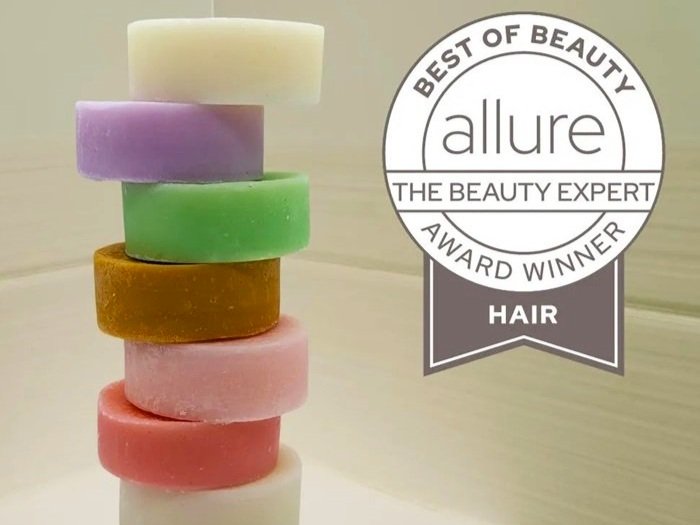
Eliminate 3-6 bottled conditioners and switch to Zero Waste Conditioner Bars ($12.25) by Tangie. Made of non-toxic ingredients, this bar comes in several scents: lavender; rosemary mint; citrus; rose geranium; rosemary, lemongrass & lime; bergamot & patchouli; and unscented.

Argan oil is a beloved ingredient in many self-care routines for its ability to smooth, repair, and moisturize. Treat your loved one with triple the goodies with the Argan Oil Kit ($48) from RoseMira.

It’s winter, which means the air is dry and cold, and not very gentle on your skin. Kusum Cosmetics is here to fix that with the Hydrating Body Care Set ($199), which comes with a shower gel and body lotion.

Make sure the bathroom becomes a true spa with extra touches like the Agave Washcloth ($9.82) from Soap for Goodness Sake. This fair trade product is made from renewably grown fiber without pesticides and provides natural exfoliation.

Rosemary is a powerful herb in many cultures, especially if slipped under a pillow to ward off nightmares. That is the idea behind the Dream Pillow ($7) from Herbaliz. Dried herbs in a muslin bag, you can tuck the bag under your pillow for sweeter sleep.
For the Little Ones

Surprise a kid in your life with an unexpected and imaginative gift. The Self Love Pouch ($25.95) is a portable potion-making kit from Little Hands that inspires confidence, strength and self-awareness.

If you have new parents in your life, a perfect gift is the Gentle Start Breathable Crib Mattress ($199) from Lullaby Earth. Made of non-toxic materials, the mattress specializes in breathability with a 3-dimensional fabric that promotes air flow.

Show them how nature is in everything and has many uses with Crayon Rocks – 16 Count ($11.80) from The Green Corner Store. They are non-toxic and made with soy wax.
For the Luxurious

Who doesn’t appreciate some extravagance once in a while? Make a statement with Columbia Gem House, an ethical gem and jewelry company, and an 8-9mm Round Cortez Pearl® Necklace on a Sterling Silver Box Chain ($420). Columbia Gem House is dedicated to an ethical supply chain and is a certified fair trade business.

Dazzle everyone this winter with the Petite Snowflake Pendant ($475) in white gold, yellow gold, or rose gold. This delicate piece from MiaDonna, also a certified B Corp, is made from 13 round-cut lab-grown diamonds, and every order plants a tree.
For the Energy-Focused

Prabhuji’s Gifts offers a variety of goods to bring the right energies into your life, from incense to smudging herbs, palo santo, and accessories. The Resin Incense Intention Line ($1.74 - $9.32) is certified vegan and can address things like promoting health and healing, a peaceful home, money and prosperity, or clearing negativity.
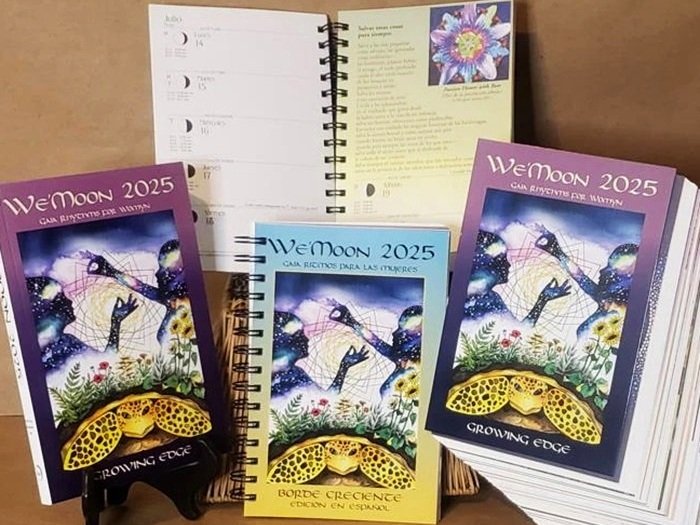
Start 2025 off on the right foot with the 2025 Datebook: Moon Calendar & Astrological Planner ($22.95) from We’Moon. This planner features daily astrological data, moon phases, changes in sun and moon signs, and multiple ways to plan—week, month, or year at a glance.

Offering support and refining poses, the Yoga Bolster ($98) is an essential tool for any practitioner. Carolina Mornings notes they can also be good for restorative yoga and injury recovery. This yoga bolster is filled with organic Kapok for optimal firmness.
For the Friends

Surprise your friends with the ultimate gift—a sustainable vacation! Winkaffe specializes in tailored, sustainable travel plans for any focus, whether that’s food, culture, or history.

Surprise your sisters with Sorority Roll-On® Bracelets ($42) from Aid Through Trade. Officially recognized by the Greek system, each set comes with three bracelets.

Does your family have a saying? Do you have a message to send to the world? Or maybe your friend just loves Taylor Swift. Whatever the idea, Ink Forest can help you out with custom designed t-shirts, made from non-toxic materials like soybean-based solvents and distributed via fair trade.
For Anyone and Everyone

Give both to a loved one and Mother Earth by planting a tree in the name of the recipient with Trees for a Change.
Happy green shopping!
|
|
How We're Greening America |
From the most recent issue of our magazine, Green American, where we update readers on the progress we've made over the last quarter on climate, finance, food, labor, social justice, and more.
We made tremendous progress building the green economy in 2024. Since our founding 40 years ago, Green America has focused on how consumers, businesses, and investors together can create a greener, fairer world, without Washington. And we’re seeing the results all around us—from farmers and companies embracing regenerative agriculture, to corporations rapidly investing in solar and wind, companies taking responsibility for toxic chemicals in their supply chains, and the thriving marketplace for small green businesses nationwide.
In 2025, with an administration that opposes solutions to the climate crisis and supports the agendas of large corporations advancing profits at the expense of everyone else, we are prepared for this moment. We’ll accelerate our green economy work on behalf of people and the planet and make progress on the most crucial issues no matter what happens in Washington—while pushing back against the worst actions coming out of Washington.
Advancing Clean Energy and Climate Solutions
Our Hang Up on Fossil Fuels campaign is moving the communications sector to 100% renewable energy that supports energy justice. Verizon is now committed to 100% renewable energy, following T-Mobile’s lead. And AT&T is ramping up renewables as well. Our Cool It campaign is getting commitments from giant grocery chains to phase out climate-destroying refrigerants, with Kroger announcing the use of natural refrigerants that protect the planet in all its new stores.
In 2025, we’ll put pressure on Comcast (which owns media giants NBC and Universal) and the tech sector to address the growing energy use of massive data centers and artificial intelligence. We’ll up the pressure on grocery chains to protect the planet with climate-friendly refrigerants. And, at the state level, we’ll work with local and national allies to stop California from pursuing biomass—cutting down forests to create energy overseas.
Accelerating Regenerative Food and Agriculture
We’re advancing regenerative agriculture at the farm and local level. Our Soil & Climate Initiative now covers 250,000 acres of regenerative farmland that sequesters carbon, protects soil health, and creates more nourishing foods. We’ve also registered over 26,000 Climate Victory Gardens nationwide drawing down carbon in backyards and communities. Our gardening webinars and resources reach over half a million people each year, and we mobilize our audiences to get food giants to end their use of harmful pesticides, with B&G foods (owner of Green Giant) taking initial steps to phase out the worst ones.
In 2025, we’ll work in Kansas to transition wheat to regenerative practices, with a long-term goal of all 5 million acres of wheat supporting climate and soil health. We’ll add another 5,000 registered Climate Victory Gardens, while working to bring organic and regenerative produce to communities that need it most. And we’ll build on our work to get large companies like Target, B&G Foods, and Conagra (think Orville Redenbacher and Act II popcorn) to remove toxic pesticides from their supply chains.
Securing Labor Justice
Our Clean Electronics Production Network launched a new chemical safety training program for workers and managers to protect electronics workers from toxic chemical exposures. We joined with the Pay Your Workers campaign to mobilize consumers, media, and activists on the ground to pressure Specialized Bicycles to start paying workers for back wages they were owned when their factory shut down.
In 2025, we’ll pilot a new chemical safety training program in Vietnam, where electronics companies are increasingly moving their production. We’ll increase our pressure on large companies to pay workers worldwide wages they’re owed. And with federal and state enforcement of child labor laws likely decreasing in 2025, we’ll publish a Dirty Dozen list of US companies that are using child labor and put pressure on them to end the practice.
Growing Responsible Investing
At a time when large insurers are dropping customers in states hit by climate disasters while heavily investing in the fossil fuels that drive climate change, our Responsible Finance Campaign launched the new Climate Smart Insurance Directory to help people nationwide find insurers with little to no investments driving the climate crisis. And we fought the increasing attacks from Republicans at the federal and state level against socially responsible investing and corporate diversity, quity, and inclusion programs.
In 2025, we’ll launch our upgraded Get a Better Bank Directory, making it easier to find thousands of banks and credit unions that are working to build up communities nationwide. We’ll promote resources to make it simpler for all investors to bank and invest responsibly. And we’ll continue to defend socially responsible investing and corporate diversity, equity, and inclusion programs from right wing attacks.
Growing the Green Marketplace with Consumers and Green Businesses
We reached millions of consumers online, and in earned and social media, with information about how to live, shop, and invest green, helping people find true green products and services. And we expanded our guides, webinars, and blogs to help the small and local companies in our Green Business Network deepen their social and environmental commitments and expand their customer base.
In 2025, we’ll increase our green living content and help people support Black, Brown, LGBTQ+, and women-owned businesses that are working to create a better world. And we’ll launch an incubator to support green businesses plus a podcast to help businesses across the country go green.
|
|
Grocery Stores Must Take Action to Stop Climate Change |
Safeway and other major grocery chains have a huge climate problem. Refrigerators in the companies’ stores using potent super-pollutant gasses, hydrofluorocarbons (HFCs), are leaking and accelerating the climate crisis.
|
|
Responsible Finance Resources |
Green America Resources
Green America has resources to help you at every stage of your journey in aligning your money with your values. You can find these resources throughout the Finance section of our website, and here.
- Looking for a mission-driven bank or credit union? Check out our Get a Better Bank map
- Want to learn the basics of investing? Check out our Invest In My Future minisite for beginners
Green America guides
Still trying to figure out how a particular aspect of responsible finance works? Check out one of Green America’s guides:
- Our Sustainable Investing Guide, co-authored with Green Century, shows you why and how to divest from fossil fuel investments and reinvest in fossil-free options.
- Our Plan for a Better Future guide, co-authored with Social(k), tells you how employers and employees can add socially responsible options to a workplace retirement plan.
Green America webinars
The Responsible Finance team regularly collaborates with other organizations to produce webinars on better banking, credit cards, property insurance, and investing, including in retirement funds. These webinars show how you can align your money with your values in all aspects of personal finance.
Past Responsible Finance webinars can be found on the Green America YouTube Channel and below.
Investing Your Retirement Plan in a Climate Safe Future, with Stand.earth, As You Sow, and Sphere 500 (October 14, 2025)
Home, Renters, and Auto Insurance Action Hour, with Third Act Upstate New York (October 6, 2025)
Greening Your Finances: Encore Edition, with Green Century and Frontier Group (September 25, 2025)
Banking for Good: How Your Bank or Credit Union Has Impact, with Hip Hop Caucus, Beneficial State Bank, Self-Help Federal Credit Union, and Adelphi Bank (September 3, 2025)
Greening Your Finances, with Green Century and Frontier Group (April 1, 2025)
Responsible Home and Auto Insurance, with Insure Our Future, GreenFaith, and Third Act Upstate New York (May 15, 2024)
Take Charge of Your Credit Card, with GreenFaith and Third Act Upstate New York (April 25, 2024)
Better Banking, with Hip Hop Caucus, GreenFaith, and Upstate New York (April 3, 2024)
Responsible Investing, with US Sustainable Investment Forum, GreenFaith, and Third Act Upstate New York (March 13, 2024)
Align Your Money with Your Values Curriculum Empty heading
Want to align your money with your values in all aspects of finance, but don’t want to go it alone? Form a cohort!
Pull together a group of at least four people (including yourself), and we will send you our Align Your Money with Your Values curriculum, plus our slide decks and other resources, and give you personalized advice to get you started on your responsible finance journey.
Our 12-part curriculum, created with GreenFaith and Third Act Upstate New York, will walk your group through the information, steps, and resources you need to align your money with your values in banking, credit cards, insurance, and investing. Learn more at Join a Cohort (coming soon!)
Office Hours Empty heading
Getting stuck in your journey to more responsible finance? Got a nagging issue or a question you can’t find the answer to?
Our friends at This! Is What We Did offer Move Your Money Office Hours. You can sign up for a 30-minute appointment with a trained peer facilitator to ask questions and get personalized assistance in switching to a new bank or credit card. Sign up here
|
|
Leaking Climate Havoc in Your Grocery Store |

Refrigerant leaks were detected in 50% of the 28 stores investigated in Northern California. | 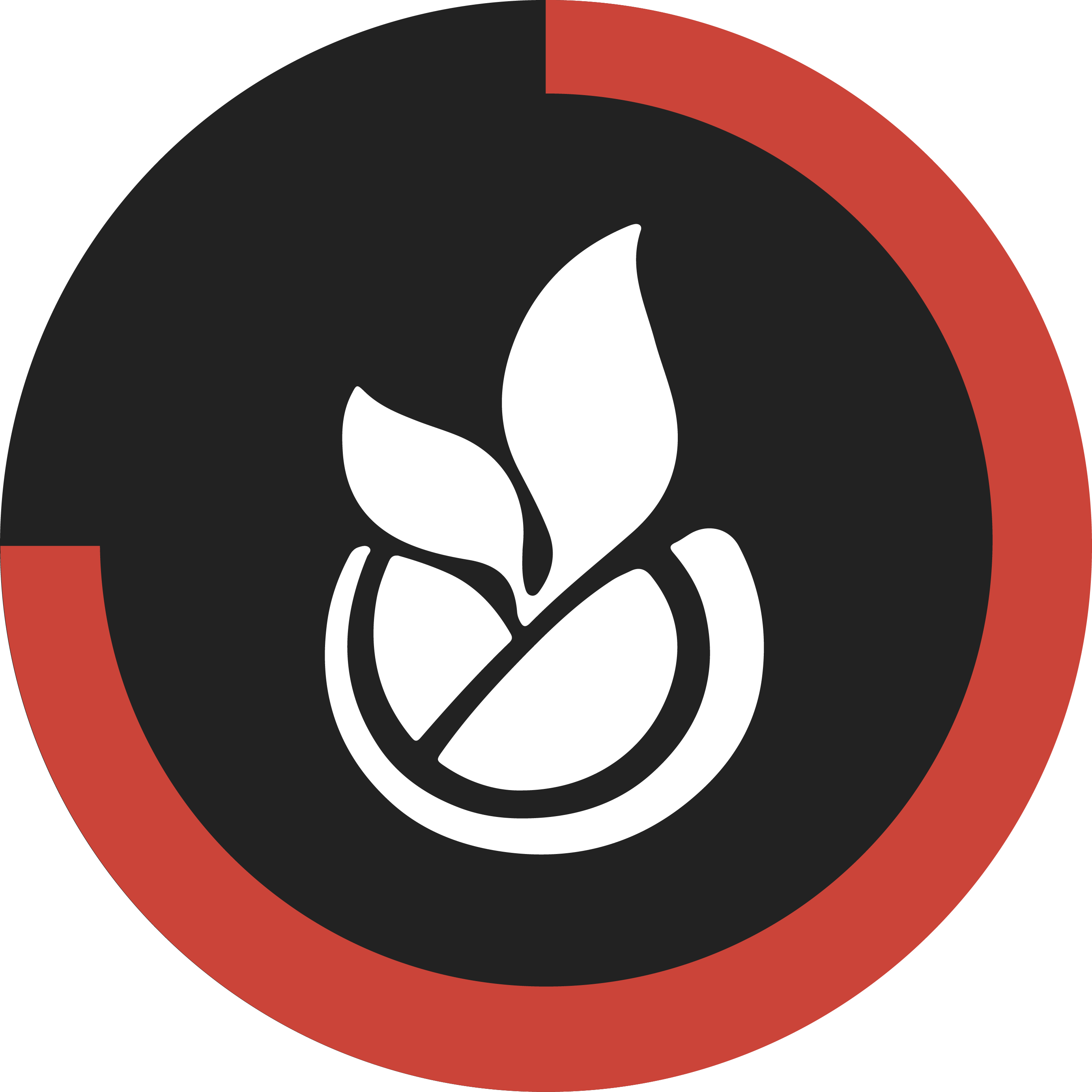
The Save Mart Companies (“Save Mart”) had leaks in 75% of stores visited. | 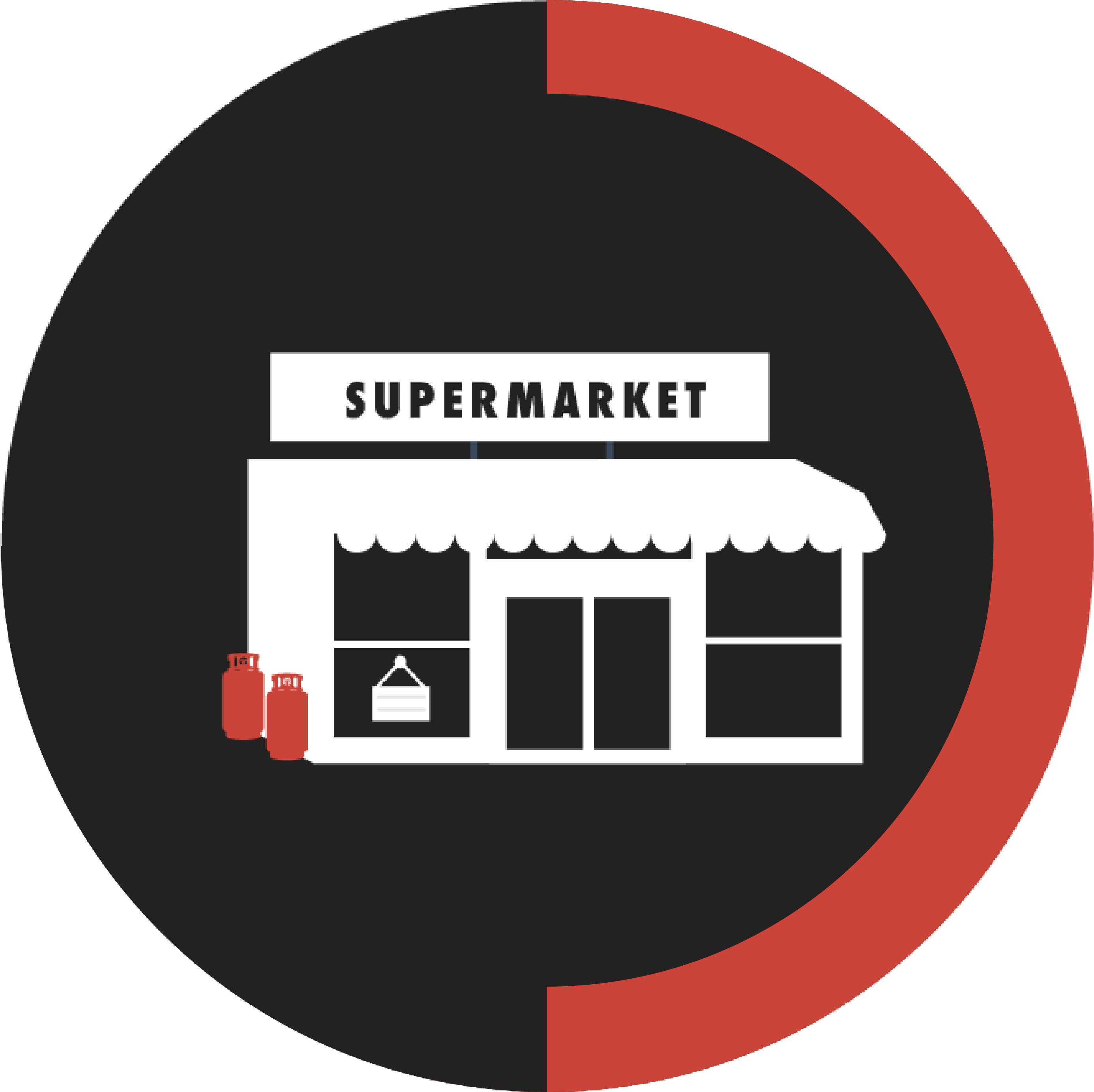
Leaks were found in half of the Safeway, Smart & Final, and Walmart stores visited for each company. | 
Investigations in the Washington, DC metro area and New York City have revealed similarly high rates of leaking stores. | 
Albertsons – parent company of Safeway – and Save Mart have both settled with the California Air Resources Board (CARB) numerous times between 2015 and 2024 for violations of the state’s Refrigerant Management Program, with penalties totaling nearly $7 million. | 
Based on CARB refrigerant management data, 23 of the stores in this investigation reported leaks in 2023. In 2024, our investigation found leaks at 12 of those stores, suggesting chronic leaks. |
Nearly all cooling systems, from a small window air conditioner to a large supermarket freezer, use some type of refrigerant. The most common in the market today are HFCs. HFCs were introduced in the 1990s as a replacement for ozone depleting substances (ODS), which are being eliminated globally under the Montreal Protocol. While HFCs are not ODS, they are thousands of times more powerful climate warming gases than CO2, with global warming potentials (GWPs) as high as 12,690 – earning their title of “super pollutants.”
HFCs are projected to comprise 19% of total global greenhouse gas emissions by 2050 as demand for cooling and refrigeration systems increases worldwide; addressing these gases has been recognized among the largest climate mitigation opportunities available. Under the Kigali Amendment to the Montreal Protocol, the global community is already working to phase down HFCs and transition to climate-friendly alternatives, including in the U.S. Alternative refrigerants with ultra-low GWPs such as CO2, propane, ammonia, and other hydrocarbon blends are already in use today.
|
|
Green Gifts from Black-Owned Small Businesses |
Shopping at small and local businesses is good for the circular economy and a best practice for supporting people and the planet. This is doubly true for businesses owned and operated by diverse leadership, especially those who have been kept from wealth accumulation. Patronizing Black-owned businesses is a smart way to Vote with Your Dollar and uplift those who have been historically marginalized.
It’s even better when you’re shopping for gifts, because who doesn’t love a gift?
Every gift recommended in this article comes from our certified Green Business Network members, which meet or exceed Green America’s standards for social and environmental responsibility, or businesses from Get The Bag {GBN}, a collective of Black woman-owned businesses.
Non-Toxic Body, Face, and Hair Care
Treat them to a luxurious Mini Facial Travel Kit ($25), which includes cleanser, toner, moisturizer, lip balm, sponge, and wooden spoon. Natural As I Wanna Be uses nontoxic ingredients in their products, which range from face to body care.
Treat yo’ self applies to the whole self. That’s where the WalkAbout Beard Oil ($25), a conditioning and soothing oil, comes in. 4elements Bath uses organic and wildly harvested ingredients to make their products, which are then placed in recycled packaging.
Put on your best face with the Vibranium Gold - Luminizer Stick ($30), a glow and brightening creme, from Plain Jane Beauty. It’s organic, cruelty-free, and is free from toxic ingredients like synthetic fragrances.
Accessories
Hi Barbie! Look your best while you live your best with the Coco Cabana (Fuschia) ($119.99) from Wooden Element. This handcrafted accessory boasts a sleek bamboo face, and Wooden Element uses upcycled wood material.
Home & Kitchenware
It’s time to add some color and fun to your home. From Mirrors Decorated, which offers original and sustainable, the WIND, "Green Color Study" Decorative Wall Mirror ($625) is a lovely piece. The mirror is made of recycled materials and papier-mâché.
Honor Black excellence with the “Josephine” Luxury Candle ($48) from Harlem Candle Co. This citrus and bergamot-scented candle celebrates entertainer Josephine Baker. Harlem’s candles are cruelty-free and vegan, made of soy wax, with clean burn 100% cotton wicks, and recyclable packaging.
Harlem Toile celebrates Black lives in with homeware reinterpreting traditional toile de Jouy. The pattern “depicts a scene of contemporary life that playfully satirizes both old and new cultural narratives.” These Sheila Bridges x Williams Sonoma Harlem Toile Cocktail Napkins, Set of 4 ($19.95) are beautiful and eye-catching additions to the home.
Food & Drink
Step up your tea game with Amber Tea Crystals ($7 - $9), made from pure cane sugar. From Adjourn Tea House, these crystal pieces add a natural, subtle sweetness to your tea.
Gwell’s signature are their tea cookies. The Peach and Pomegranate Superfood Tea Cookies ($6, or $5.40 with a subscription) is a shortbread cookie that is plant-based, non-GMO, and sustainably sourced organic peaches and pomegranates.
Did someone say chocolate? Joy Craft Cocoa’s Hot Chocolate Experience Gift Box ($33.99) is a decadent gift for a loved one. It comes in various flavors, like Mexican hot chocolate or chocolate strawberry, this set comes with packs of cocoa, recipe cards, artisan marshmallows, and more.
Build your friend a custom 6-Piece Bon Bon Box ($16) from One More Cocoa with flavors like scotch bonnet honey and strawberry cheesecake.
Everything Else
Get something truly unique with the 8 x 10 Classic Silhouette ($35) from artist Janelle Washington. The custom pieces are hand-drawn and –cut and can highlight fun hairstyles and accessories, too.
Go deep next game night with the Actually Curious Game – Human Rights edition ($25). This card-based game invites friends and family to explore important topics facing our society and our lives including social justice, mental health, environmental sustainability, and more.
Find a Black-owned bookstore in the US, like Black Pearl Books in Austin, TX and give your recipient a banned book, like Maya Angelou’s “I Know Why the Caged Bird Sings” ($8.99).
Happy sustainable shopping!
|
|
Responsible Finance Action Center |
For most people, aligning your money with your values requires some education. Where can you find financial institutions that don’t bankroll fossil fuels? Which insurance companies don’t underwrite or invest in oil and gas? How do you know where your retirement funds are invested?
If you are unsure how all of this works, Green America has lots of information and resources. Learn more about all aspects of responsible finance at these links:
If you are ready to move forward with aligning your money with your values, click on one of the boxes below to:
- Take a pledge to switch to responsible banking, credit cards, insurance and investing
- Access our curriculum for cohorts who want to move their money together
- See our top resources and guides for better options in all aspects of finance
- Find fossil free products and services
|
|
Shareholder Resources |
If you want to learn more about socially and environmentally responsible shareholder resolutions filed each year, Green America's allied organizations have several resources that can help.
Proxy Preview
One of the important shareholder resources is Proxy Preview, published each spring by As You Sow, Empowered Venture Partners, and Proxy Impact. Proxy Preview tracks and analyzes hundreds of shareholder resolutions on environmental, political spending, human rights, diversity, governance issues, and more. It includes dozens of contributor articles by authorities and practitioners.
Green America endorses Proxy Preview each year and pulls from the resolutions it tracks to provide Key Shareholder Resolutions to Vote.
Resolution Process
Interfaith Center on Corporate Responsibility (ICCR), a coalition of over 300 faith- and values-based institutional investors, explains what shareholder resolutions are and shareholder engagement as the strategies investors use to influence companies on environmental and social risk. These strategies include dialogues with corporate management, filing shareholder proposals, and more.
Of increasing importance in the face of mounting attacks on responsible investing is understanding and defending shareholder rights. The Shareholder Rights Group publishes blog posts that explore the legal and administrative underpinnings for shareholder engagement.
Resolution Trackers
Each year ICCR issues a Proxy Resolutions and Voting Guide. The guide presents ICCR member-sponsored resolutions in human rights, climate change, political lobbying, diversity and racial justice, corporate governance, environmental health, health equity, and more.
As You Sow, which harnesses shareholder power to create lasting change, leads dozens of shareholder resolutions each year across a broad range of ESG issues. You can see these resolutions – and the outcomes – on their Resolutions Tracker.
Ceres, a nonprofit advocacy organization that works to accelerate the transition to a cleaner, more just, and sustainable economy, has an Engagement Tracker that follows hundreds of climate-related shareholder resolutions and director votes each year. You can reach each resolution, see who filed it, and learn its status. You can also search the tracker for specific resolutions or topics.
Shareholder Proposals: An Essential Investor Right
The investor right to file shareholder proposals has recently come under attack from legislation in Congress, lawsuits filed in the federal courts, and new regulatory guidance from the SEC. Shareholder Proposals: An Essential Investor Right, published by the Interfaith Center on Corporate Responsibility, Shareholder Rights Group, and US SIF, offers a detailed and thoughtful defense of shareholder proposals. It catalogues their role in creating a powerful public platform for challenging and improving corporate policies, practices, performance and impacts and providing an important mechanism for surfacing investor perspectives on material issues.
The report demonstrates how shareholder proposals have enabled investors to safeguard their portfolios from risks and protect the American public by helping to catalyze positive corporate change on an array of issues such as excessive drug pricing by pharmaceutical companies, railroad safety, online child safety at tech companies, and oversight of addictive opioids by manufacturers. It also spotlights improvements in corporate governance such as annual board elections, independent directors and majority voting that have occurred from decades of shareholder proposals led largely by a dedicated group of individual investors seeking structural changes at corporations to improve board and management accountability.
Green America is not an investment adviser, nor do we provide financial planning, legal, or tax advice. Nothing in our communications or materials shall constitute or be construed as an offering of financial instruments or as investment advice or investment recommendations.
|
|
Key Shareholder Resolutions to Vote |
Fewer ESG resolutions in 2025
The 2025 shareholder resolution season was scaled back from previous years. Shareholders filed 355 environmental, social, and governance proposals as of February 21, 2025 – 34% less than the 536 such proposals in 2024.
Why was the number of shareholder resolutions down this year?
- Shareholders who filed resolutions in previous years decided not to file this year until they could assess the direction of the new Securities and Exchange Commission (SEC).
- The change in presidential administration has dramatically shifted policy at the SEC, which is excluding many more proposals now than in previous years.
- More companies engaged in dialogue with shareholders to avoid the need to vote on resolutions that could draw attention given the current political attacks on DEI and climate.
Still, there were many important shareholder resolutions to vote on in 2025, including:
- 85 proposals that address climate change
- 77 proposals on corporate political influence
- 52 proposals on environmental management
- 37 proposals on human rights
- 36 proposals on diversity at work
If you own company stock directly (not in a mutual fund), we urge you to vote your values on the company's resolutions.
Below you will find a list of 2025 shareholder resolutions as of February 21, grouped by company name and by issue.
Read your proxy ballots carefully and cast your votes to reflect your values. Here are quick tips on how to read a proxy ballot.
By Company
Issues Structure
Resolutions By Issue
New this year is a list of anti-ESG resolutions that attack corporate progress on diversity, human rights and other important social issues. The number of anti-ESG resolutions continues to climb, this year accounting for 14.7% of all proposals.
Please note that each company's proxy ballot may not exactly match the shareholder resolutions we list here. This list is based on Proxy Preview, which was published this year in April. Often companies challenge shareholder resolutions at the SEC, or a resolution may be withdrawn by its sponsor. If that occurs after Proxy Preview goes to print, you may not see that resolution listed on the company's proxy ballot.
Definitions
Here are definitions of key abbreviations and terms you’ll see in our short descriptions of the shareholder resolutions:
- Net-zero GHG emissions = “net zero means cutting greenhouse gas [GHG] emissions to as close to zero as possible, with any remaining emissions re-absorbed from the atmosphere, by oceans and forests for instance” – United Nations
- Scope 3 = “….emissions a company is responsible for outside of its own walls—from the goods it purchases to the disposal of the products it sells? In fact, the majority of total corporate emissions come from Scope 3 sources,…” Greenhouse Gas Protocol
Shareholder rights and shareholder democracy
As a share owner, you are a part-owner of the company, and voting your proxy is an important responsibility.
- Learn about your shareholder rights! Shareholder Proposals: An Essential Investor Right, by the Shareholder Rights Group, Interfaith Center on Corporate Responsibility and US SIF, catalogues the role of shareholder resolutions in creating a powerful platform for challenging and improving corporate policies, practices, performance and impacts, and in surfacing investor perspectives on material issues.
- Learn about Shareholder Democracy, a movement to transform corporate governance by empowering nonprofit civil society organizations to represent shareholders of publicly traded companies.
Thank you for voting your values! Post this “I'm voting” badge on social media and let people know you're proud to raise your voice on important issues as a shareholder. Click to share to Facebook or Twitter.

Green America is not an investment adviser nor do we provide financial planning, legal, or tax advice. Nothing in our communications or materials shall constitute or be construed as an offering of financial instruments or as investment advice or investment recommendations.
|
|
What to Know About Shareholder Activism |
Dialogues ... proxy voting ... resolutions. What does it all mean? How can you use your investments to join shareholder advocacy for corporate responsibility? Below, we give you the basics about how shareholder activism works, and how you can get involved.
What is shareholder action?
Shareholder action, also known as shareholder advocacy or shareholder activism, describes the efforts of a growing number of investors to use their status as part-owners of companies to influence corporate behavior. As one of the three main strategies of socially responsible investing (SRI), shareholder action is a powerful tool for encouraging corporations to improve their social and environmental records.
Shareholder activists employ the following strategies:
Dialogues
Often, the first step a coalition of investors will take to change corporate behavior is to request a dialogue with management on issues of concern. Individual investors often participate in the dialogue process by writing letters to corporate management in support of shareholder campaigns.
Shareholder resolutions
If dialogues yield no progress, or if a company refuses to discuss issues with shareholders in the first place, concerned investors will often introduce shareholder resolutions, or written requests to company management. As owners of a corporation, shareholders have the right to participate in annual meetings—and to file resolutions to be voted on at these meetings. These resolutions can request reports from management or propose that the company consider changes in practices or policies.
Here's where the power of the individual comes in: All shareholders who are investors of record may vote on resolutions either in person at the company's annual meeting or via a proxy ballot that is mailed or e-mailed to all investors before the annual meeting. Proxy ballots arrive together with the proxy statement, which is a booklet that presents the details of the proposals that must come to shareholders for a vote. Proxy voting is the primary forum where management seeks affirmation of what it is doing, and where shareowners weigh in on important issues.
Divestment campaigns
If dialogues and resolutions fail to get results, shareholders may divest, or sell off, their stock in the company in protest. Divestment campaigns were key in persuading corporations with a stake in South Africa to pull out of the country as a means of pressuring the government to abolish apartheid. Even the hint of a divestment campaign being launched against it can make a corporation sit up and take notice, as divestment represents a potential drop in share price and loss of revenue. However, divestment is used as a last resort of shareholders, since it signals an end to attempts to negotiate.
I get proxy ballots in the mail (or e-mail). What do I do with them?
Your proxy ballot will arrive before a company's annual meeting, which generally takes place in the spring of each year, so look carefully at any correspondence from the companies in which you hold stock, or from your financial adviser.
If you invest in mutual funds, you automatically delegate your proxy voting rights to the fund managers, so it is important to invest in funds that share your values.
You vote your proxy simply by filling out the form you receive and mailing it back before the due date; phoning your results in, if there is a call-in option listed on your ballot; or voting on the Internet using special voting Web sites like proxyvote.com. Be sure to mark your votes on your ballot, even if the instructions don't specifically tell you to do so; ballots returned unmarked count as votes for management's position. How to read a proxy ballot
Some organizations such as As You Sow are now using a proxy voting app. Votes are recommended for board elections and shareholder resolutions in hundreds of companies; you can follow all the recommended votes, or review them individually to decide how to vote. Learn more.
I heard that some shareholder resolutions get less than 10 percent of the vote. How can these low numbers trigger corporate change?
Historically, very few social resolutions achieve majority votes at corporate annual meetings. In fact, many votes come in at the 5 percent to 25 percent range. However, even those seemingly low numbers represent a significant number of unhappy shareholders. And, since shareholder action campaigns are often accompanied by coordinated consumer and media campaigns, resolutions represent damage to a company's reputation and branding, and a potential loss of revenue through negative publicity, consumer boycotts, and loss of investor confidence.
In fact, the mere act of filing a proposal has prompted some companies to amend their policies. When a resolution succeeds even before it comes to a vote, investors will usually withdraw it from the ballot.
If a resolution comes to a vote and the company doesn't respond, shareholder activists will often keep the pressure on by re-filing the proposal the following year. According to rules of the Securities and Exchange Commission (SEC), approved in 2020, a resolution must receive 5 percent of the vote the first year it is filed, 15 percent the second year, and 25 percent every year thereafter to continue to be included on the proxy ballot.
I own stock, but I never see my proxy ballots. Why?
Your money manager or financial adviser may be receiving your proxy ballots and voting on your behalf. When you first hired your money manager or financial adviser, you may have signed paperwork saying you didn't want to receive these materials. Ask your money manager or financial adviser if you can get the proxy ballots so you can vote—or if you can give instructions on how you want the votes cast and let him or her do the paperwork. Warning: Many money managers or advisory groups have policies dictating that they automatically vote with corporate management. If this is the case, you'll have to get guarantees from your financial adviser that s/he will follow your instructions, or take voting into your own hands, since corporate managers almost always recommend voting against social and environmental concerns.
If you invest in mutual funds, you automatically delegate your voting rights to fund managers. To find out how your mutual fund is voting on proxy resolutions, call the fund's investor relations department, request this information, and express your views on the position you want the fund to take.
Why does my socially responsible mutual fund invest in companies with questionable practices? Is it engaging in shareholder action?
Most likely, yes. As noted above, socially responsible mutual funds promote corporate responsibility by targeting exceptional companies for investment, by avoiding the most irresponsible companies, and by putting their considerable investment clout behind shareholder campaigns targeting borderline companies.
Thanks to a 2022 SEC rule mandating transparency in mutual fund proxy voting, all mutual funds are now required to provide investors with information about how they are voting all their proxy ballots. If you have a particular concern about a company included in your mutual fund, call the fund's investor relations department and ask for its proxy voting information.
Can I introduce a shareholder resolution?
To file a shareholder resolution, you must hold $25,000 worth of company stock for one year before trhe date the proposal is submitted, OR hold $15,000 worth of company stock continuously for two years before the proposal is submitted, OR hold $2,000 worth of company stock continuously for at least three years before the proposal is submitted.
It's best for individual investors who want to file a shareholder resolution to team up with investor coalitions or organizations such as As You Sow or Interfaith Center on Corporate Responsibility.
Often, the first thing a company will do upon receiving a resolution is to take it before the SEC and ask that it be thrown out -- and recently the SEC has been tightening rules so that resolutions are more likely to be dismissed. Groups with experience introducing shareholder resolutions have the resources and legal backing to ensure that their proposals make it onto the ballot and are written correctly.
An easier way to get involved in filing a proposal is to join an existing group of filers and be a co-filer, lending your shares to the coalition, being updated on its progress, and providing input on negotiations within the company.
Ready to start voting your values? Check out the latest key shareholder resolutions to vote.
Green America is not an investment adviser, nor do we provide financial planning, legal, or tax advice. Nothing in our communications or materials shall constitute or be construed as an offering of financial instruments or as investment advice or investment recommendations.
|
|
Shareholder Advocacy |
Owning stock gives you a voice
If you own just one share of stock in a company, you have a voice in how that company is run. As a shareholder, you can be an advocate for social and environmental issues you care about that are affected by the companies in which you invest.
Each year, companies that are publicly traded on the stock market hold an annual general meeting (AGM). Leading up to and at that meeting, all investors of record can vote on the board of directors as well as key issues brought forward through shareholder resolutions.
Hundreds of shareholder resolutions are filed every year on a wide range of environmental, social, and governance issues at companies across all sectors of our economy. Examples include asking companies to set goals to reduce greenhouse gas emissions, report on gender and racial pay disparities, disclose political influence spending, and more.
How it works
Shareholder ballots—called proxy ballots because they are voted remotely by proxy rather than in person at the company’s annual meeting—are emailed or postal mailed to shareholders. Voting your proxy ballots is a powerful way to voice your values in how the companies you invest in are run.
Shareholder advocacy has a long and storied history, but is perhaps best known for contributing to the downfall of apartheid in South Africa. It has been used to bring attention to critical social and economic concerns that may not show up in a company’s books but nevertheless affect the company’s outlook.
Voting on shareholder resolutions is not like voting in an election. Even if a resolution does not pass, if a significant percentage of shareholders support it, that may be enough to push a company to change. Sometimes resolutions are withdrawn, not because they don’t have support but because company leadership decides to implement what the resolution was asking for.
Click on the boxes below to learn more about shareholder advocacy and key resolutions to vote.
Key allies involved in shareholder advocacy
Look for Proxy Preview, published each spring, for the most comprehensive data on hundreds of shareholder resolutions—including environmental, corporate political spending, human rights, diversity, sustainable governance issues, and more.
Green America is not an investment adviser, nor do we provide financial planning, legal, or tax advice. Nothing in our communications or materials shall constitute or be construed as an offering of financial instruments or as investment advice or investment recommendations.
|
|
Park + Coop |
Coming soon.
|
|
Save Green and Go Green with Holiday Sales from Sustainable Shops |
As the air turns brisk and skies cloud over, winter fast approaches and with it, the holiday season. A time to be with loved ones and, depending on your love language, giving and receiving gifts. Whether you love shopping for gifts or can’t imagine anything worse, this list of holiday sales from sustainable shops will make everything easier with great gift ideas and green practices.
Save on everything from fair trade jewelry to plant-based skincare and organic home products.
Every sale recommended in this article comes from our certified Green Business Network members, which meet or exceed Green America’s standards for social and environmental responsibility.
Free $4800 Bed Frame with Purchase

Why is the Adriano bed frame the perfect match for your SAMINA Sleep System? The customizable bed frame is handcrafted from solid oak wood and responsibly sourced for guilt-free luxury.
- FREE Adriano King Bed Frame ($4,840) with purchase of New SAMINA Sleep System
15% Off Hot Therapy Pillows

Soothe your muscles with a Hot Cherry therapeutic pillow, a body pillow filled with cherry pits, which absorb heat.
- 15% off your entire order with code XMAS24 (thru 12/24/31)
25% Off Nontoxic Skin and Haircare
Take care of everything from your hair to your body and using nontoxic skin, face, and haircare. Max Green Alchemy creates their products using 100% natural origin and no synthetic chemicals, and free of everything from GMOs to Parabens.
25% off with code GREEN2 (thru February 2025)
Free Gift with $150 Orders

It’s important to keep your skin moisturized during the colder months and One Love Organics has products for your skin and body that are cruelty-free and an ECOCERT certification.
15% Off Tree Dedication Gifts

Planting native species in wildfire devastated National Forests and getting to watch your tree grow through photos and location maps is a very thoughtful gift from Trees For a Change.
- 15% off all Tree Dedication Gifts with code SMALLBIZ24 (thru 12/25/24)
Get Free Coffee and More

Velasquez Family Coffee has delicious, fairly traded Honduran coffee in flavors like Caribbean Hazelnut and Irish Cream.
- Get one (1) bag of coffee free when you add three (3) to your cart. Use code 2024HolidayB2G3 (thru 12/31/24)
- Get one (1) holiday flavored coffee, like Eggnog Creme, with code 2024HolidayB2G3
- Free shipping on your first mail order with code FREESHIP2024 (thru 12/31/24)
Get 10% Off Fair Trade Gifts

Ethical gifts are the best kind of gifts and fair trade business Fair Trade Winds offers everything from pillows to candles and hats to wreaths.
- 10% off your order with code GREEN10 (thru 1/1/25)
Get 30% Off Nontoxic Cleaning Products

From laundry to candles, luxuriate your home with the planet in mind. The Good Home Co. has detergents and stain removers, as well as sheet sprays.
- 30% off sitewide with code GREEN30 (11/28 - 12/15/24)
30% Off Ethical Jewelry

Find ethically made and sourced jewelry of all variations from WorldFinds to ensure you’re the coolest and greenest fashion icon.
- Get 30% off sitewide on orders over $50 with code GREEN30 (thru 12/31/24)
Up to $12 Off Clean Bodycare

Using the fewest possible ingredients, Be Green Bath + Body has gentle and thoroughly tested products for your hair, body, and skin.
- $5 off $50 with code GRHOL5 (thru 12/20/24)
- $12 off $100 with code GRHOL12 (thru 12/20/24)
15% Off African Woven Baskets

Directly imported from artisans in Bolgatanga, Ghana, these beautiful baskets come in a variety of styles, shapes and colors. Zuku Baskets proudly supports over 5,000 weavers and their families in Bolga.
- 15% off entire order with code basket15 (thru 12/31/24)
Happy holidays and happy sustainable shopping!
|
|
“LEAKING HAVOC”: 50% OF NORTHERN CALIFORNIA SUPERMARKETS SURVEYED FOUND EMITTING SUPER POLLUTANT GREENHOUSE GASES |
WASHINGTON, DC – NOVEMBER 20, 2024 – The Environmental Investigation Agency (EIA), Green America and YouthPower Climate Action released a new report, Leaking Havoc in Northern California, investigating leaks of hydrofluorocarbon (HFC) used in refrigeration at major supermarkets in the Bay Area and Sacramento. The organizations visited Safeway, Kroger-owned Ralphs Grocery or Foods Co., the Save Mart Companies (including Lucky), Smart & Final, Walmart and detected leaks at half (50%) of the sites. Previous Leaking Havoc investigations conducted by EIA of stores in the Washington, DC area and New York City found similar leak rates.
Avipsa Mahapatra, Climate Campaign Director at EIA US, said: “Our investigations prove that dangerous, avoidable climate pollutants continue to seep unchecked from supermarkets. California has taken leadership action by creating a program to track and regulate these refrigerant emissions. However, there’s an urgent need for further investment in robust enforcement to stop these leaking super pollutants from undermining our climate goals and public health.”
Key report findings:
- HFC refrigerant leaks were detected in 50% of the 28 stores investigated.
- Save Mart Companies (including Lucky) had leaks in 75% of stores visited.
- Leaks were found in half of the Safeway, Smart & Final, and Walmart stores visited for each company.
- Albertsons – parent company of Safeway – and Save Mart have both settled with the California Air Resources Board (CARB) numerous times between 2015 and 2024 for violations of the state’s Refrigerant Management Program (RMP), with penalties totaling nearly $7 million.
The California Air Resources Board (CARB) is the state agency for climate change programs and air pollution control efforts to achieve health-based air-quality standards. The agency’s Refrigerant Management Program (RMP) began in 2009 to reduce emissions from large refrigeration systems, like those used in supermarkets. Under the RMP, companies are required to conduct regular leak inspections for refrigerant leaks and if found, repair within two weeks of detection.
Beth Porter, Senior Climate Policy Analyst at EIA US, said: “For too long, too many companies have accepted wasteful refrigerant leaks as part of the cost of doing business, but the climate and communities have been bearing the full cost of these emissions. We need supermarkets to set zero-leak tolerance policies and prioritize transitioning to widely available natural refrigerants.”
HFCs are a group of man-made greenhouse gases considered to be a “super climate pollutant” because they have thousands of times more global warming potential (GWP) than carbon dioxide (CO2). The average supermarket leaks 25% of its refrigerant each year. Across the 42,000 stores nationwide, EIA estimates U.S. supermarkets release the greenhouse gas equivalent of burning 65 billion pounds of coal every single year.
Dan Howell, Green America Climate Campaigns Director, said: “The Leaking Havoc report shows the supermarket industry needs to take urgent action to protect communities from the devastating effects we are already seeing across the county from climate change. Hurricanes, wildfires, and floods are just a few of the examples of disasters tearing communities down. Stopping leaks of HFCs and switching to safer refrigerants is a big step major supermarkets must take to mitigate climate change.”
Bella Goldwasser, of YouthPower Climate Action, said: “Reducing refrigerant emissions has always been a really exciting solution to Youthpower, because of how high impact the change would be. HFCs' staggering warming power, coupled with their shorter lifetime, mean they are an incredible way to reduce the heat trapped in our atmosphere quickly, which we need right now. More policymakers should have this important information, so we can establish more rigorous standards for detecting and preventing leaks. Collecting data about the harm related to leaks also helps to underscore the importance of transitioning to low-GWP natural refrigerants as soon as possible."
In September, the EPA finalized a new rule under the American Innovation and Manufacturing (AIM) Act that includes requirements for repairing leaking refrigeration equipment and installing automatic leak detection systems. According to the agency, “[the] rule will provide additional cumulative greenhouse gas emissions reductions of approximately 120 million metric tons of carbon dioxide equivalent, an incremental net benefit of at least $6.9 billion.”
###
ABOUT
Green America is the nation’s leading green economy organization. Founded in 1982, Green America provides the economic strategies, organizing power and practical tools for businesses, investors, and consumers to solve today’s social and environmental problems. http://www.GreenAmerica.org
Environmental Investigation Agency (EIA) is an independent non-profit campaigning organization dedicated to identifying, investigating, and implementing solutions to protect endangered wildlife, forests, and the global climate. EIA Climate campaign works to eliminate powerful greenhouse gases and improve energy efficiency in the cooling sector, and expose related illicit trade to campaign for new policies, improved governance, and more effective enforcement. www.eia.org
YouthPower Climate Action is a youth-led grassroots organization based in Alameda, California that connects young people to real actions they can take to stop climate change. https://www.youthpowerclimateaction.org/
MEDIA CONTACTS:
Max Karlin, (703) 276-3255, or mkarlin@hastingsgroupmedia.com.
Denise Stilley, Head of Communications, EIA US, dstilley@eia-global.org.
|